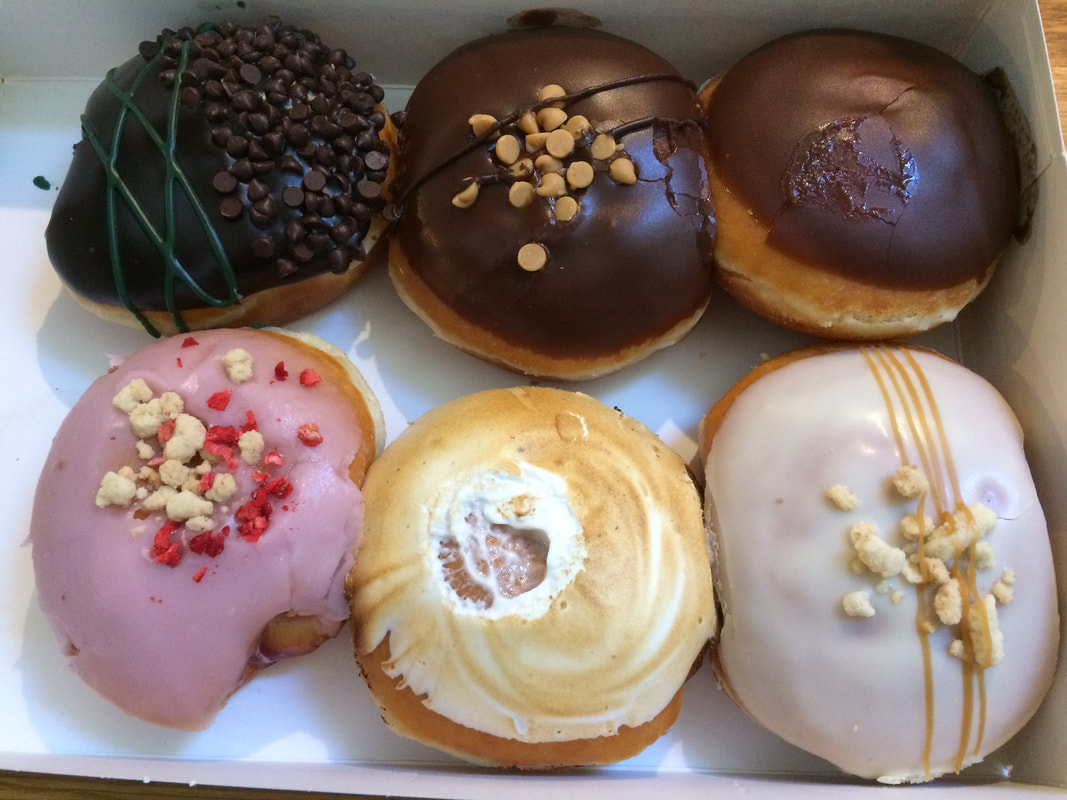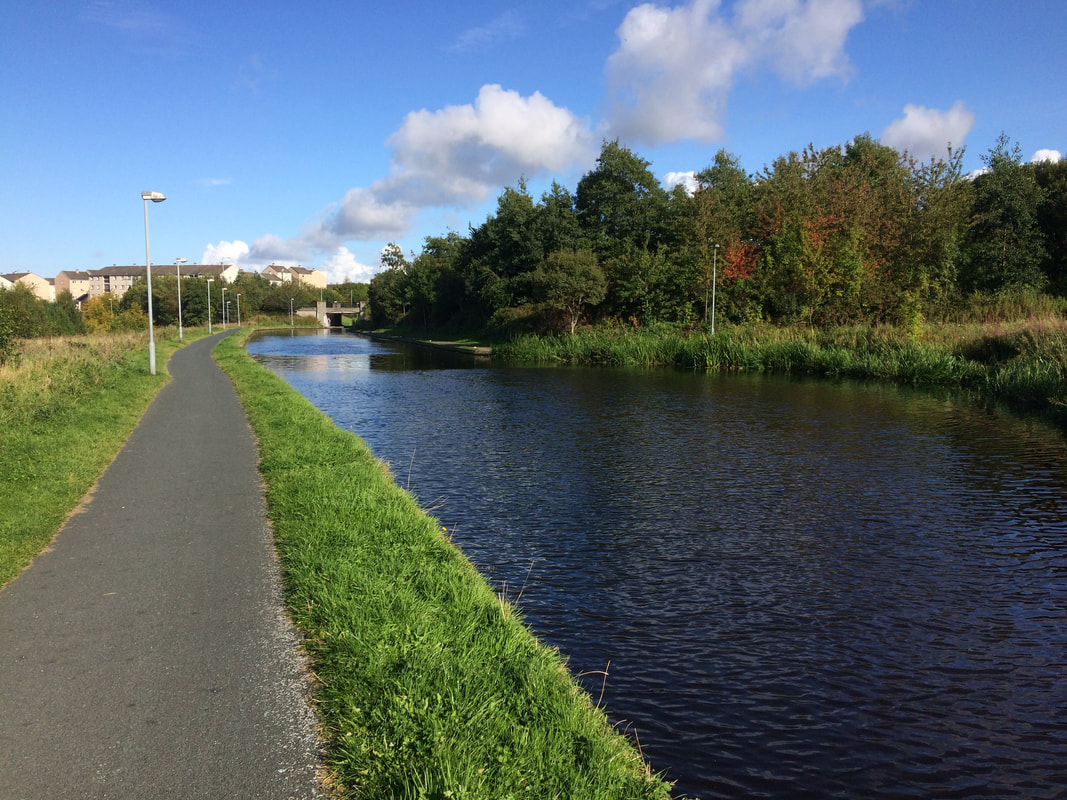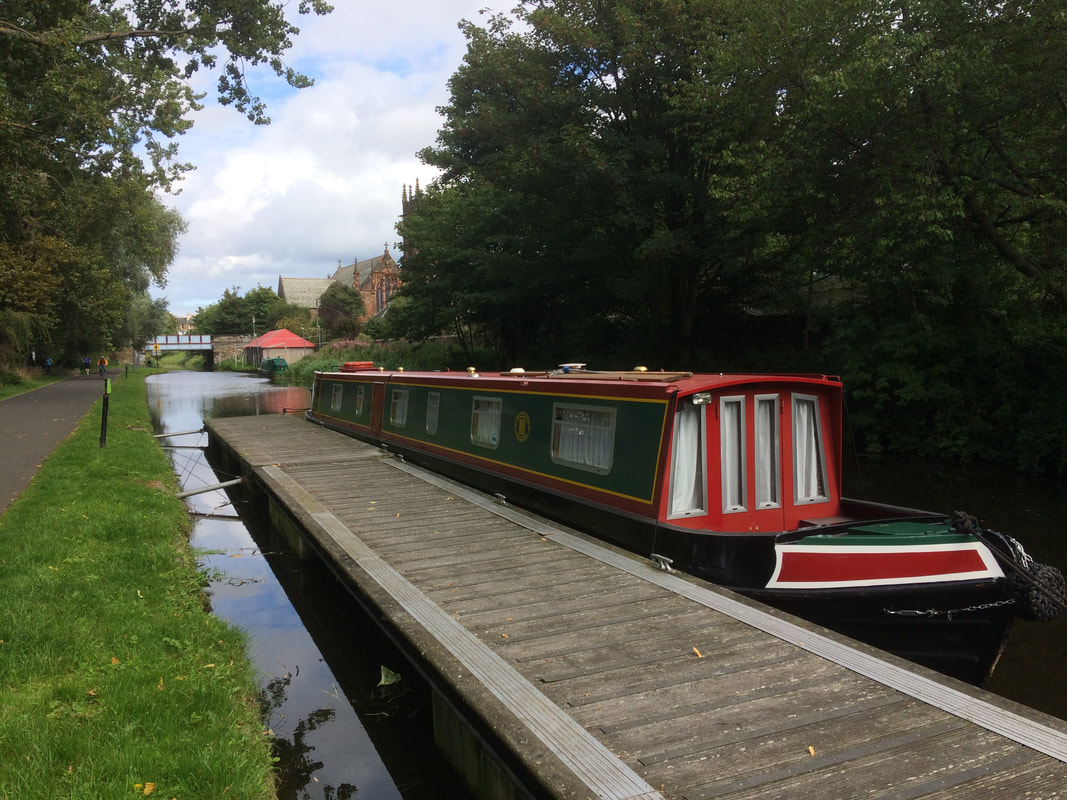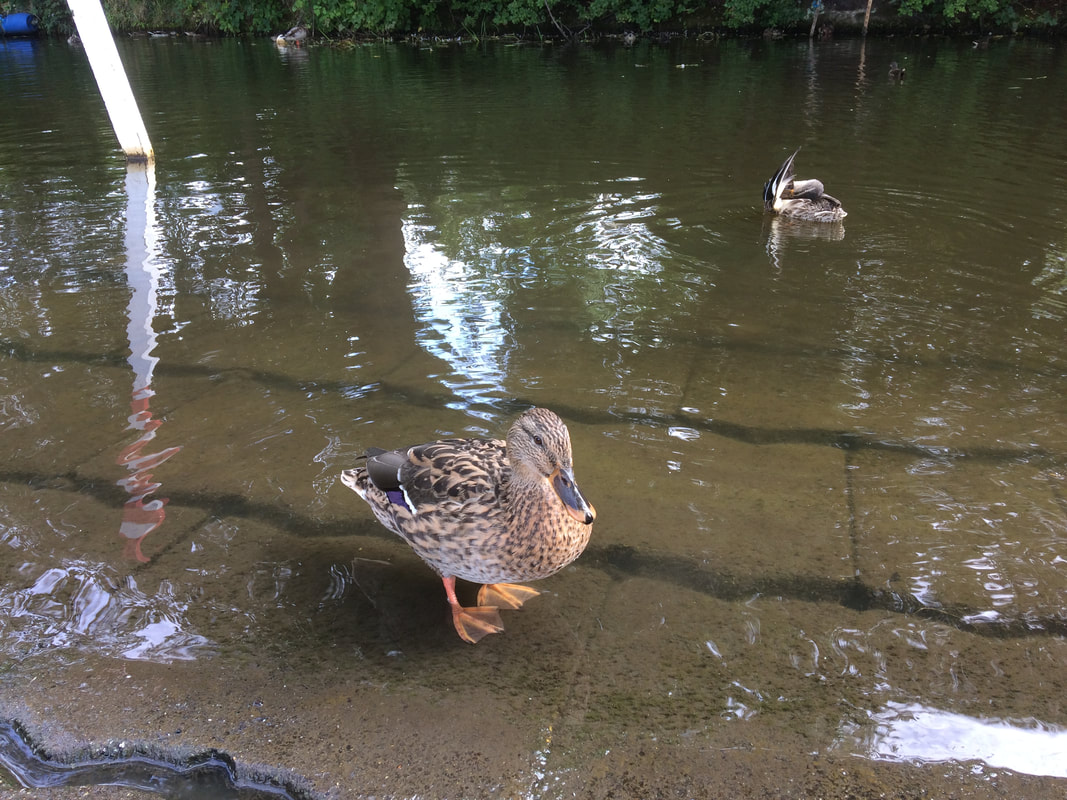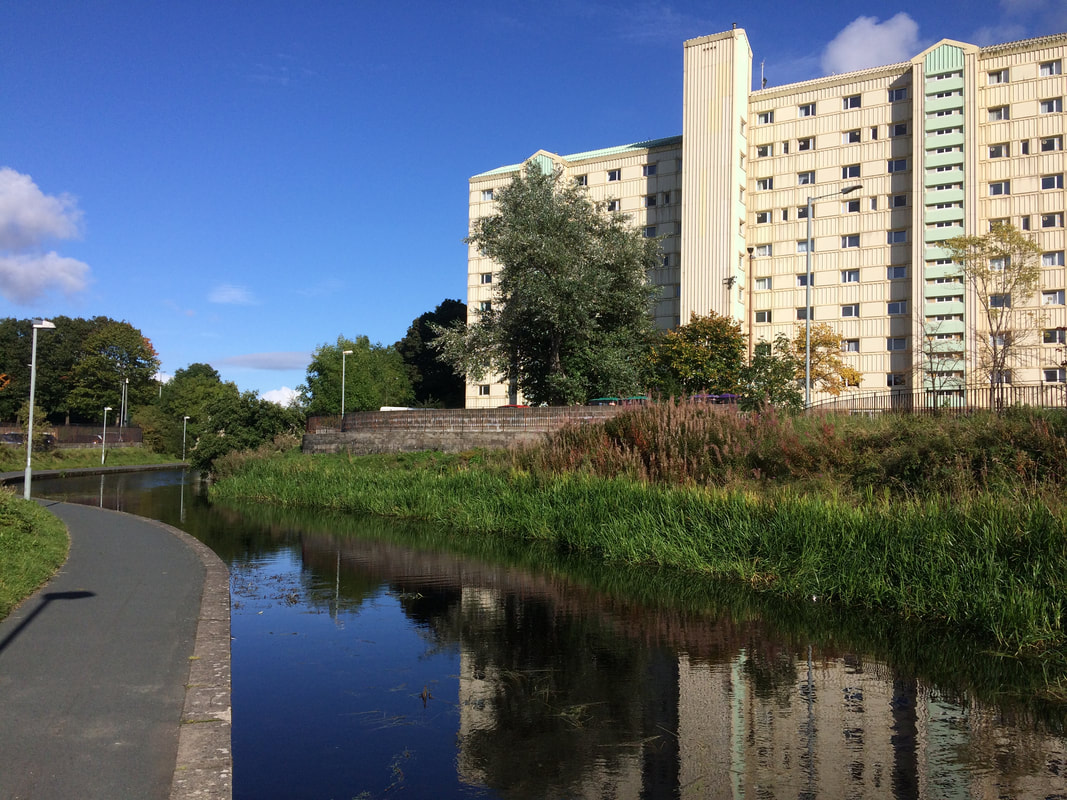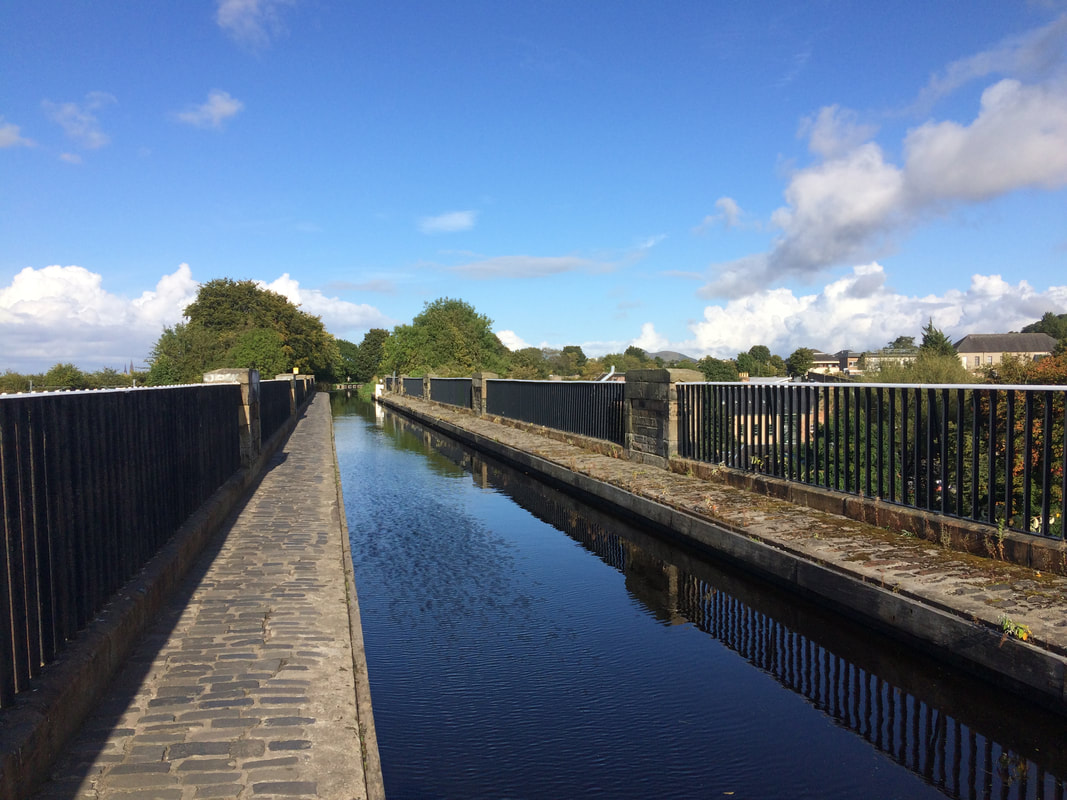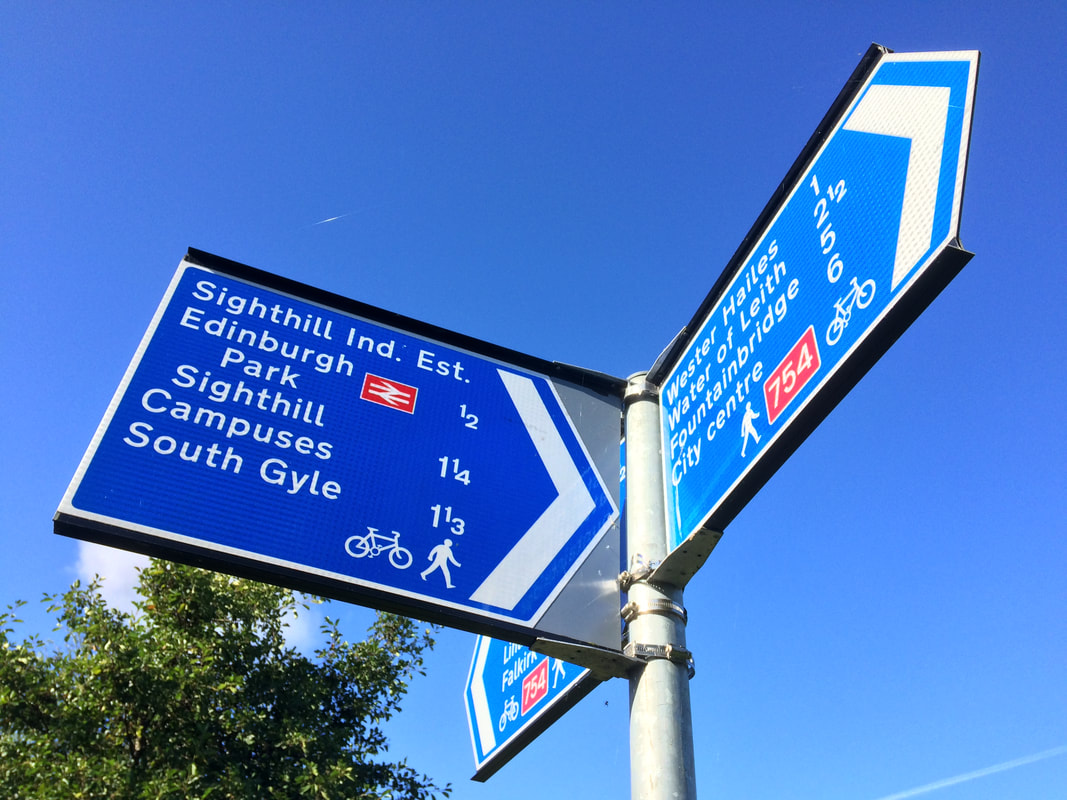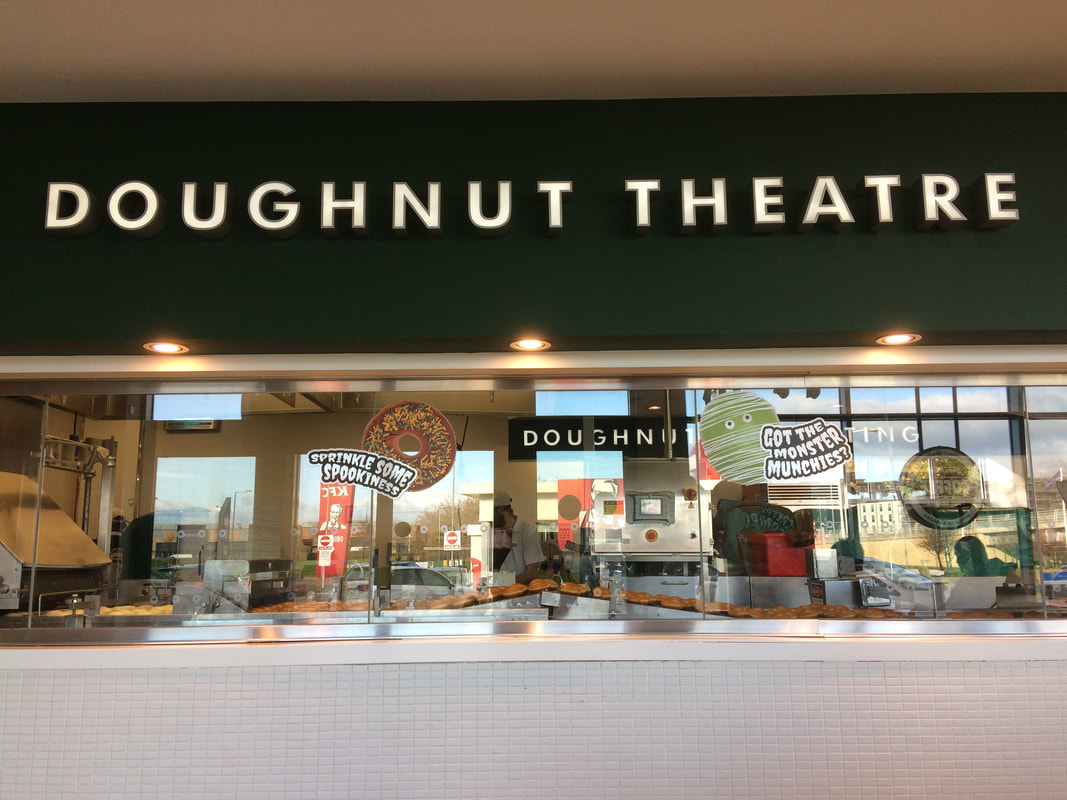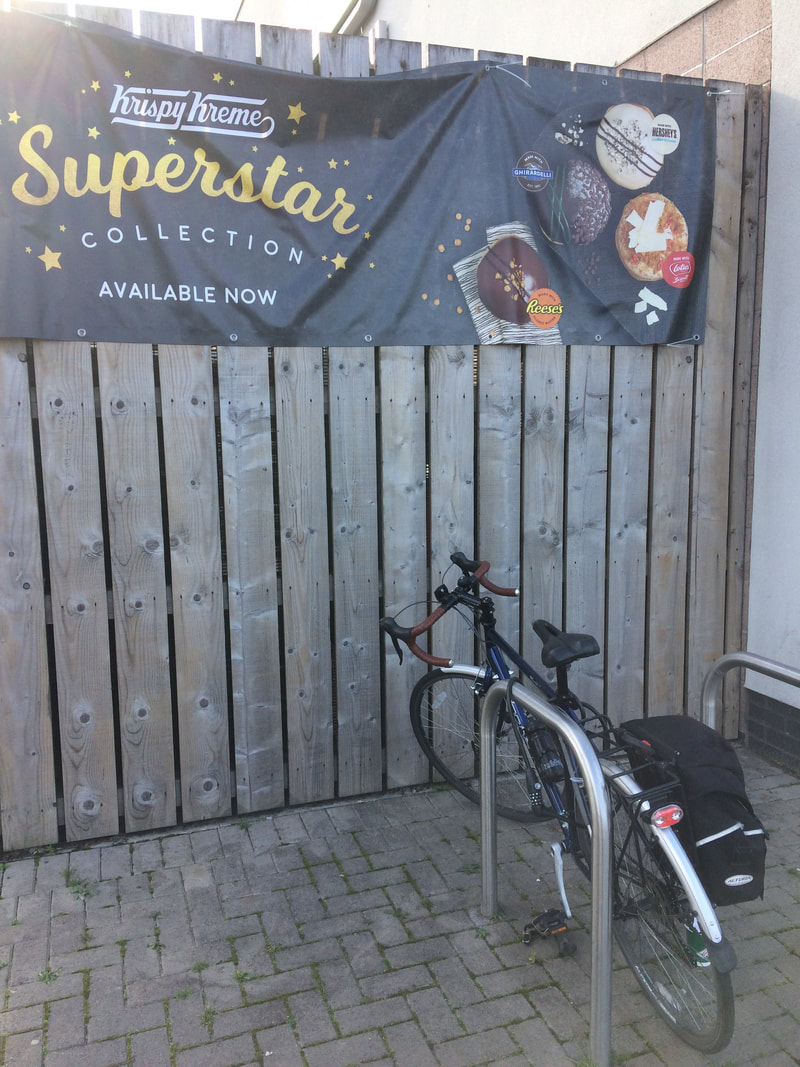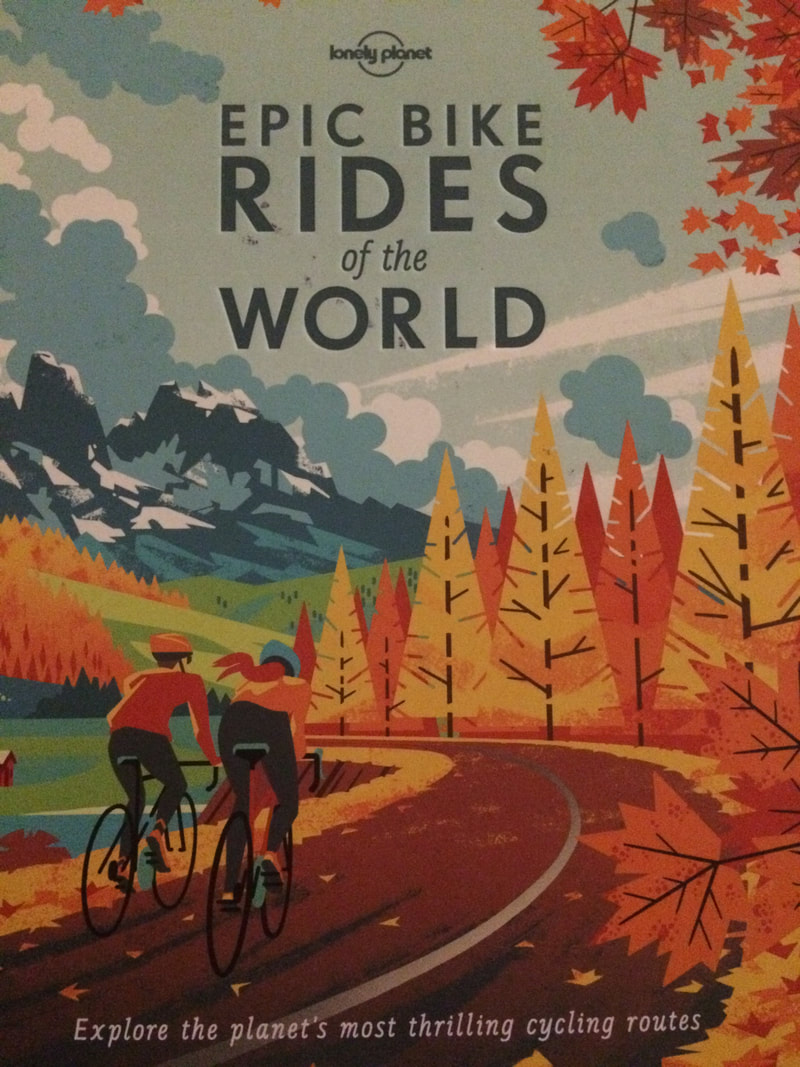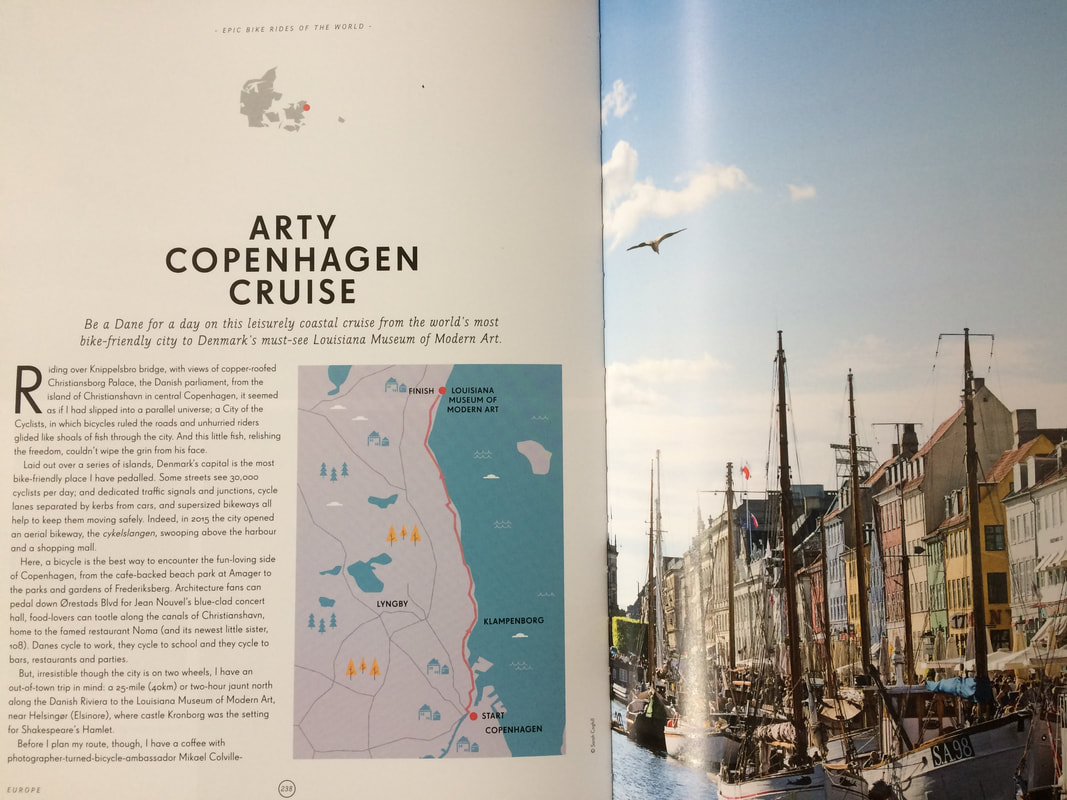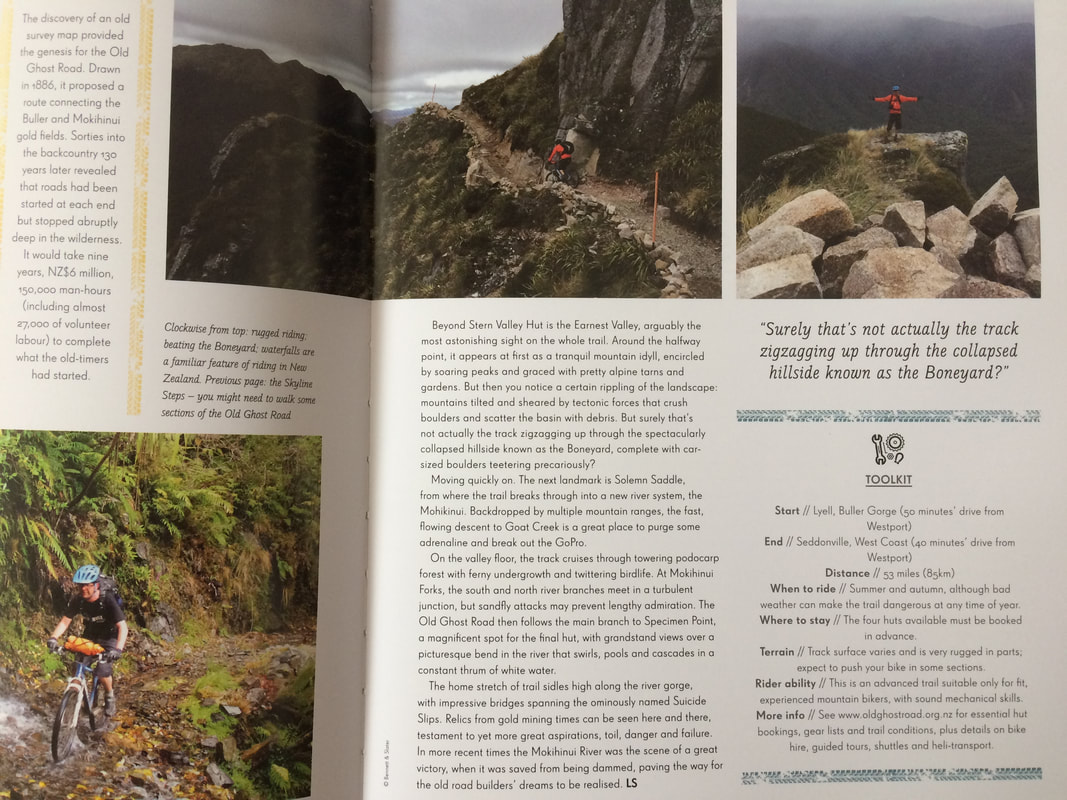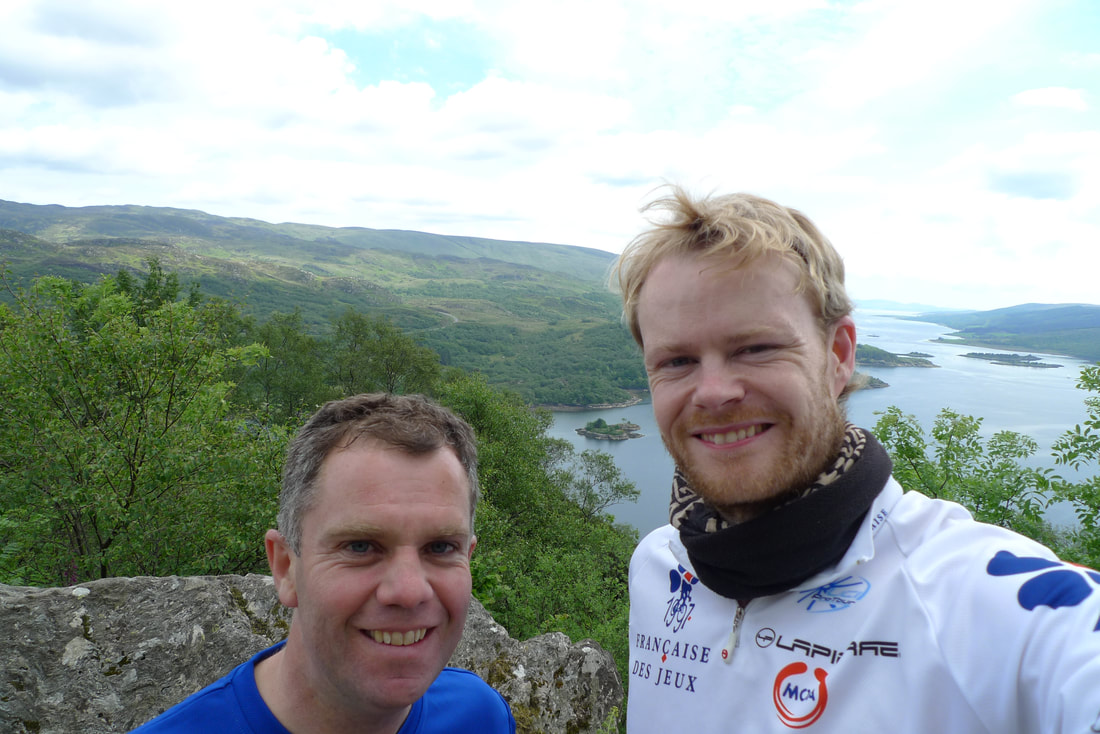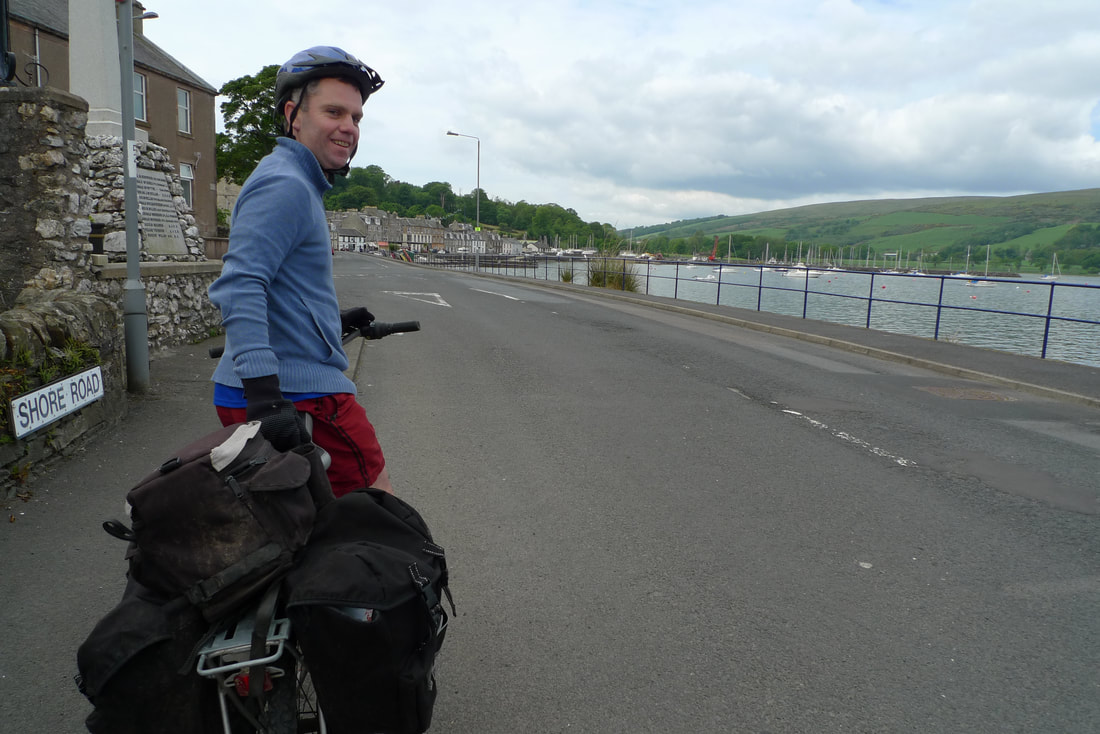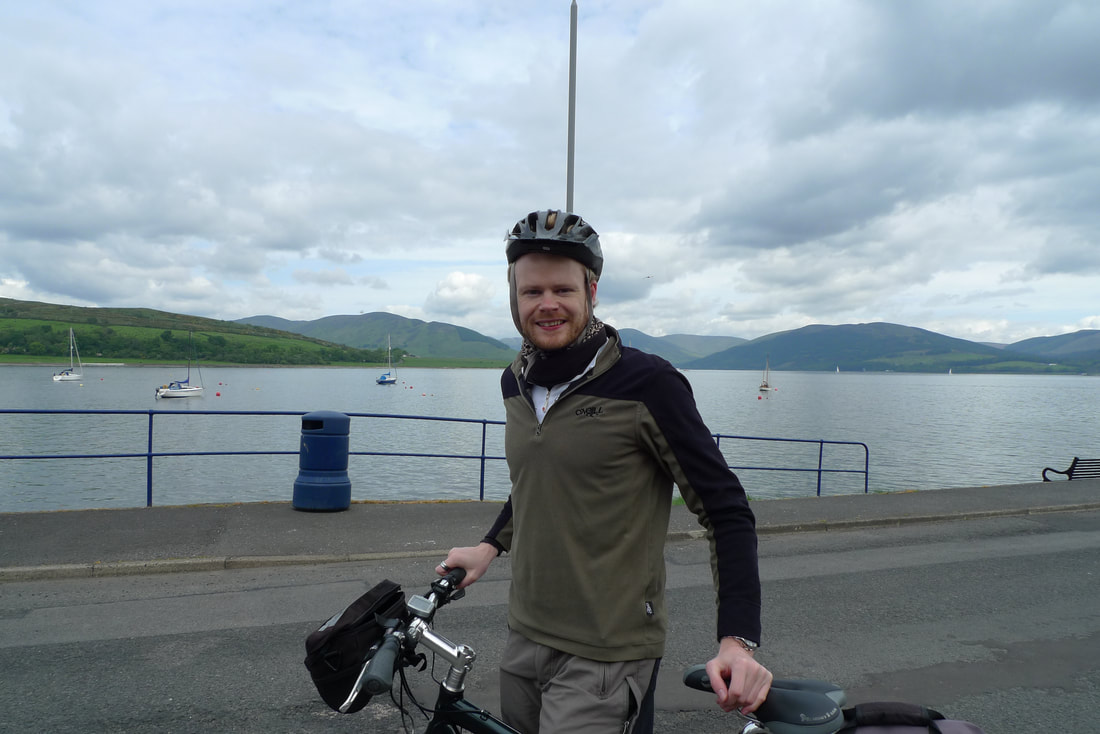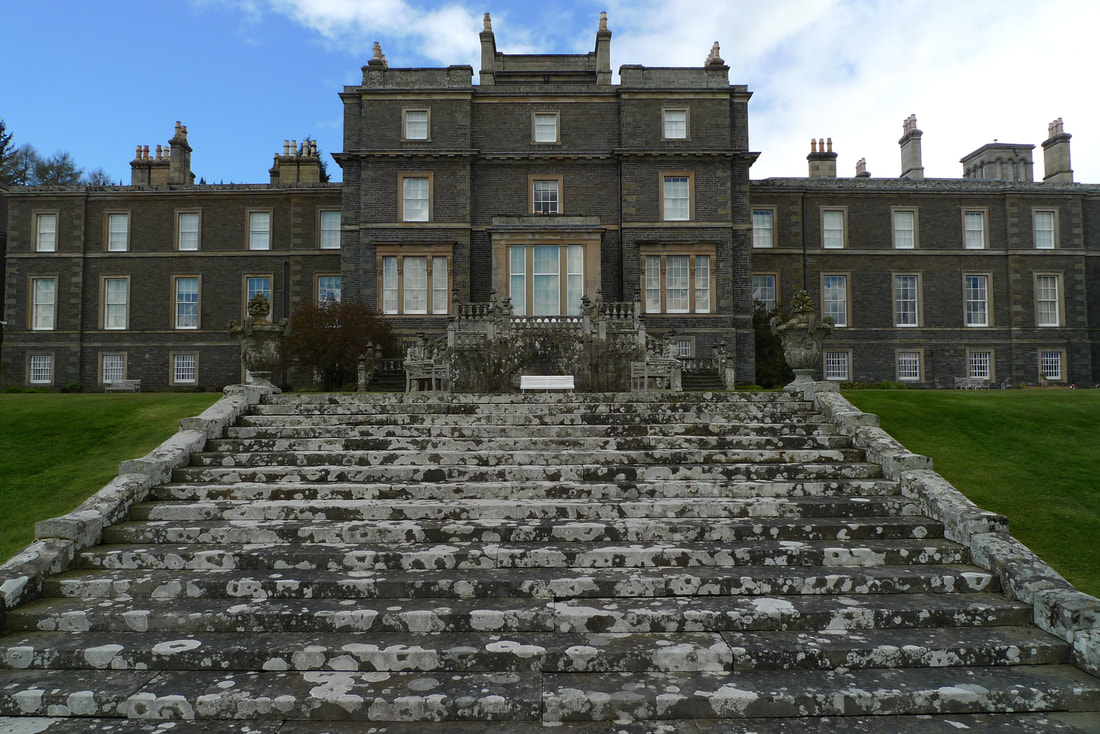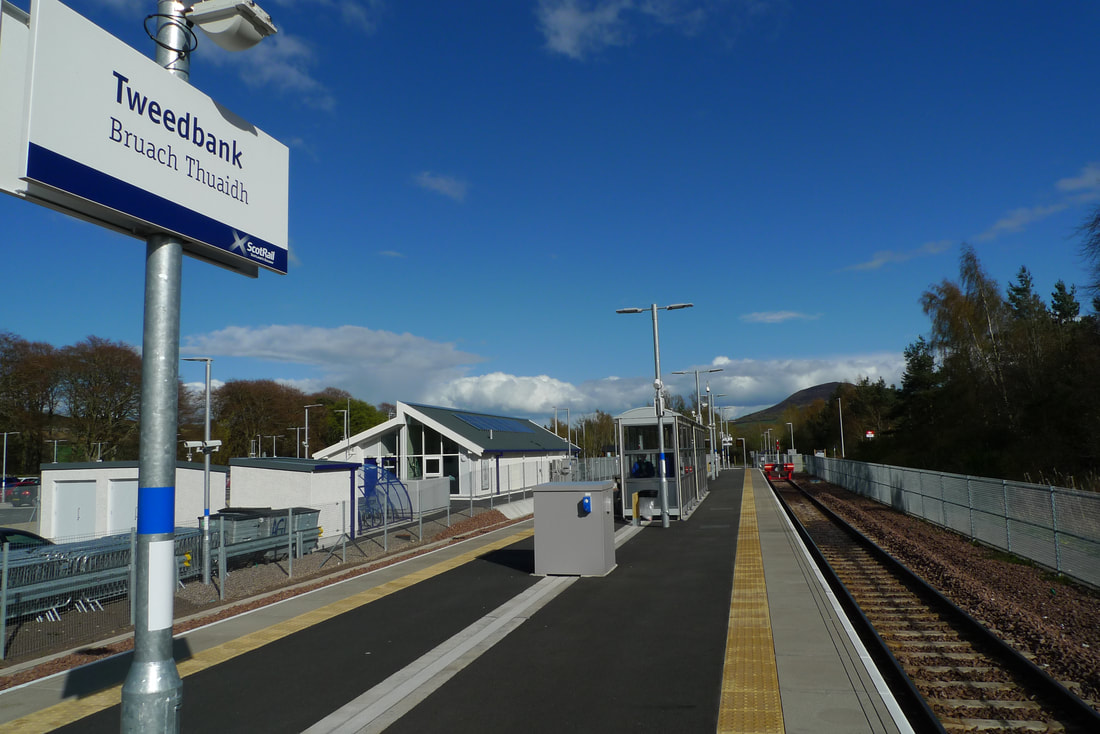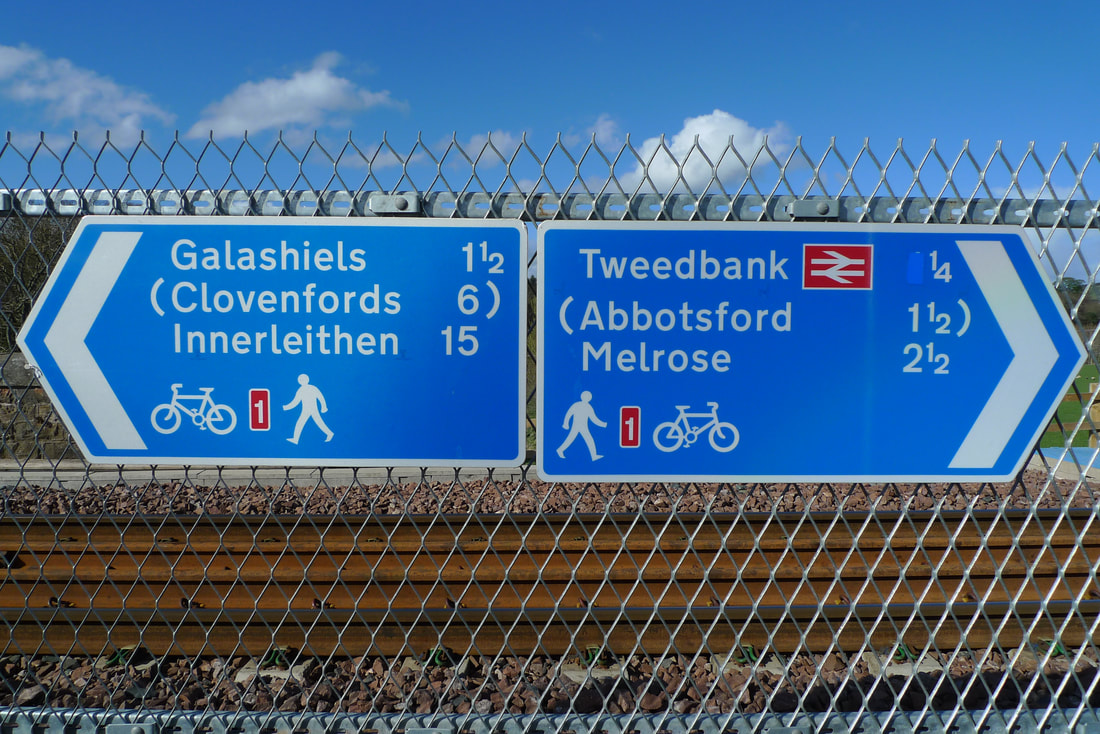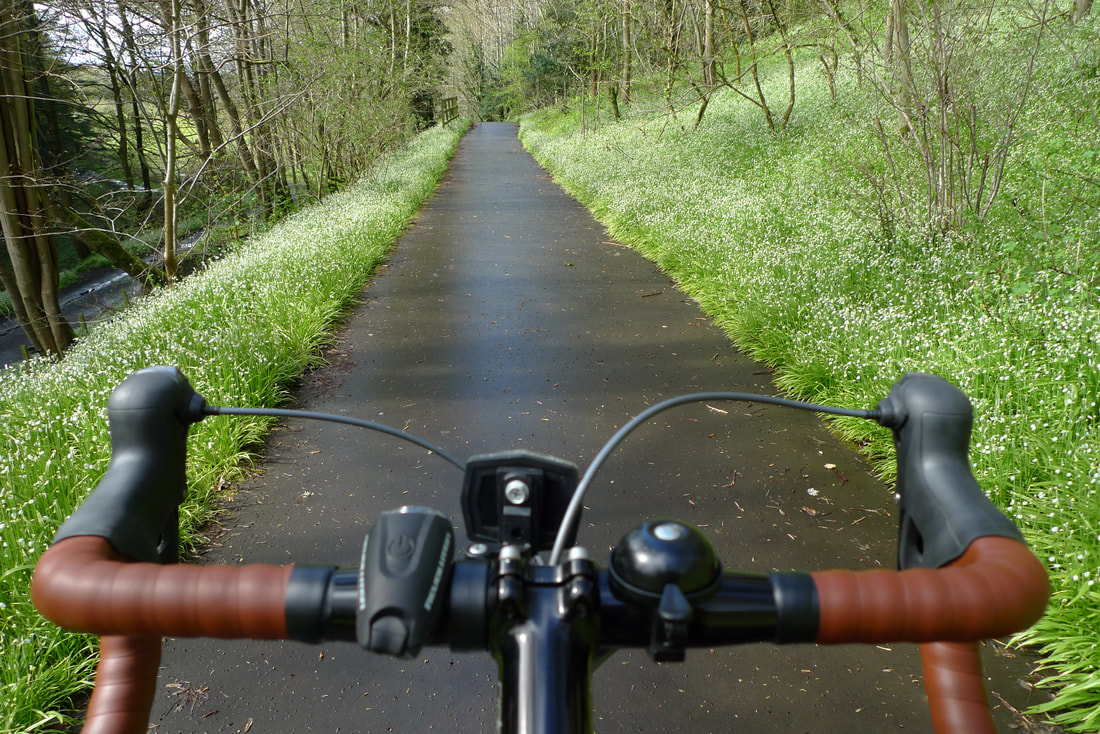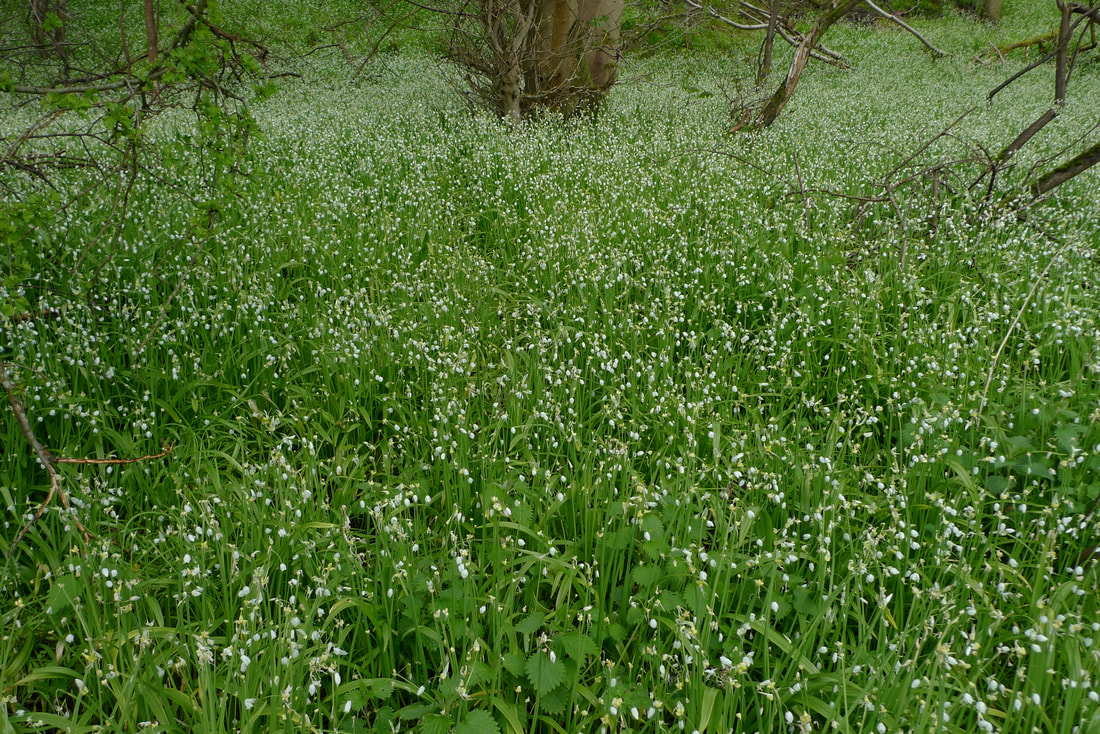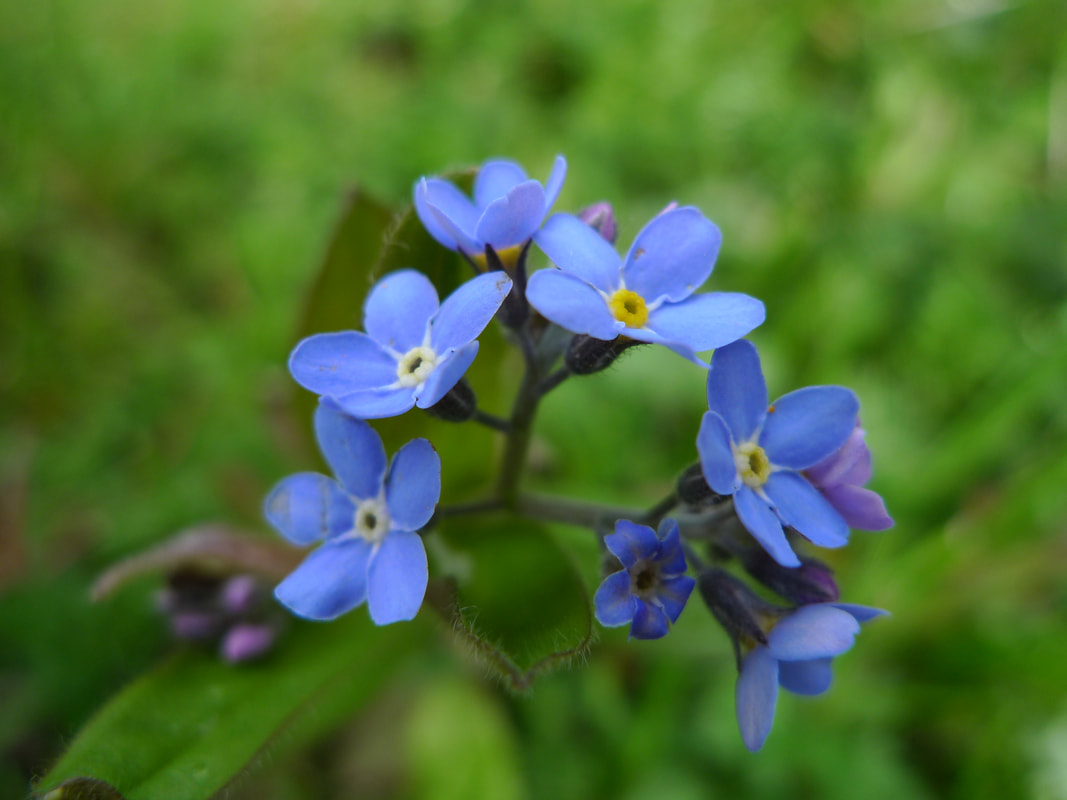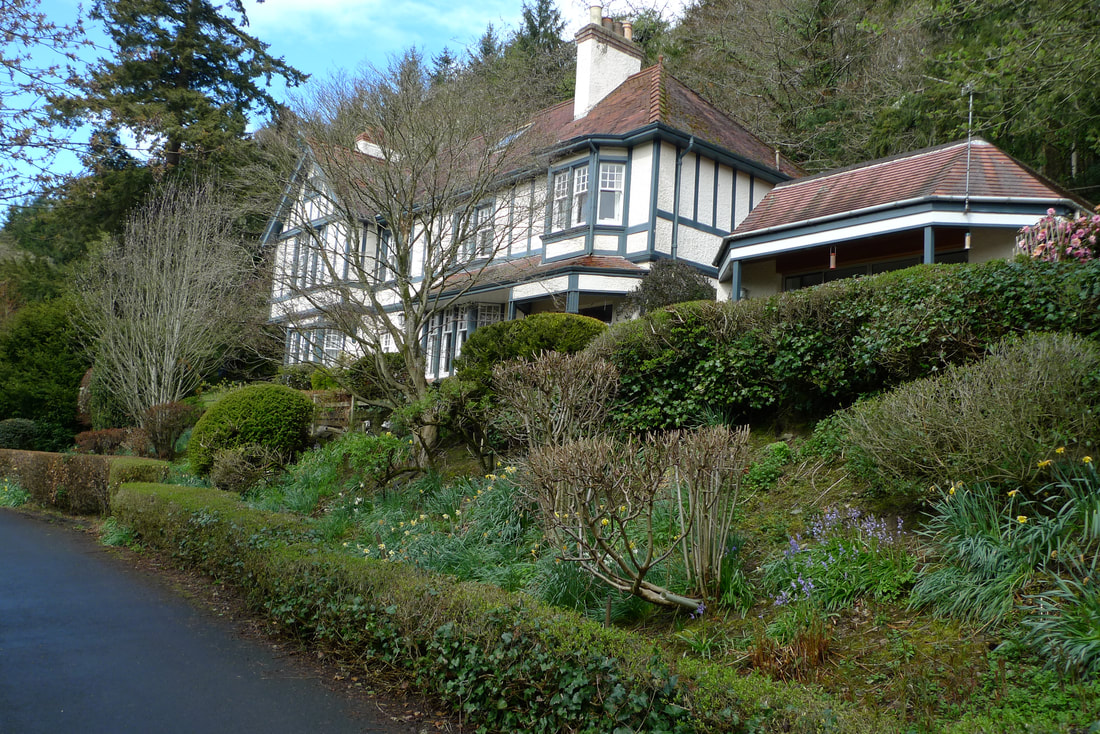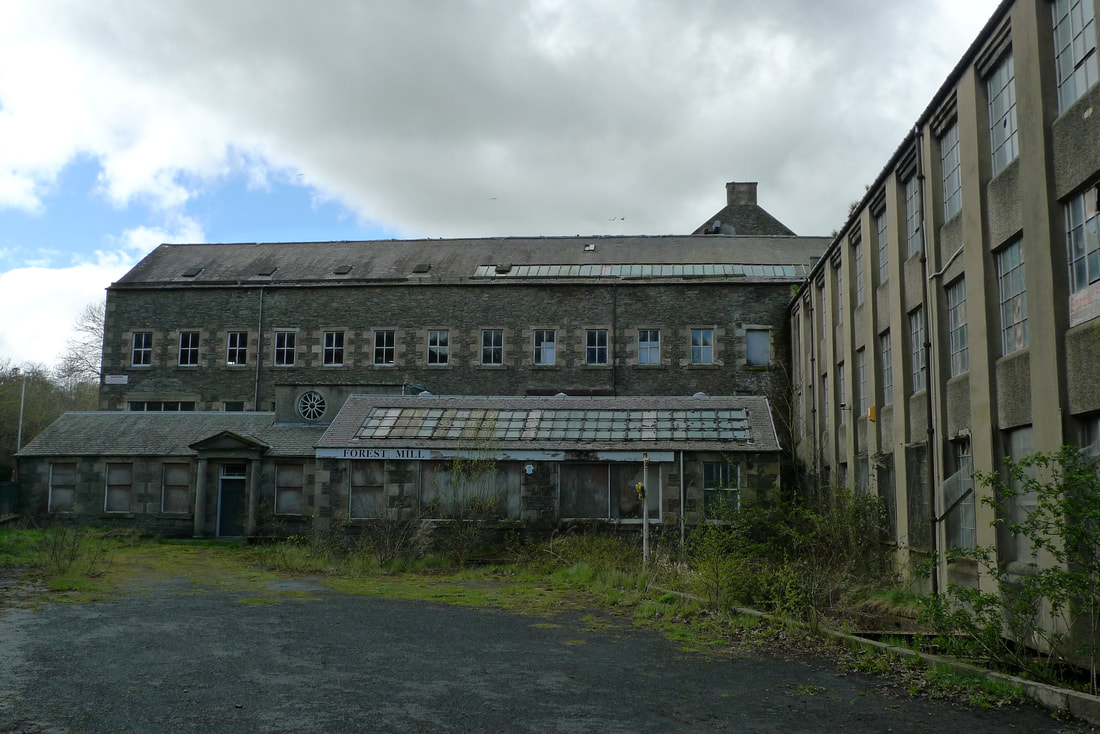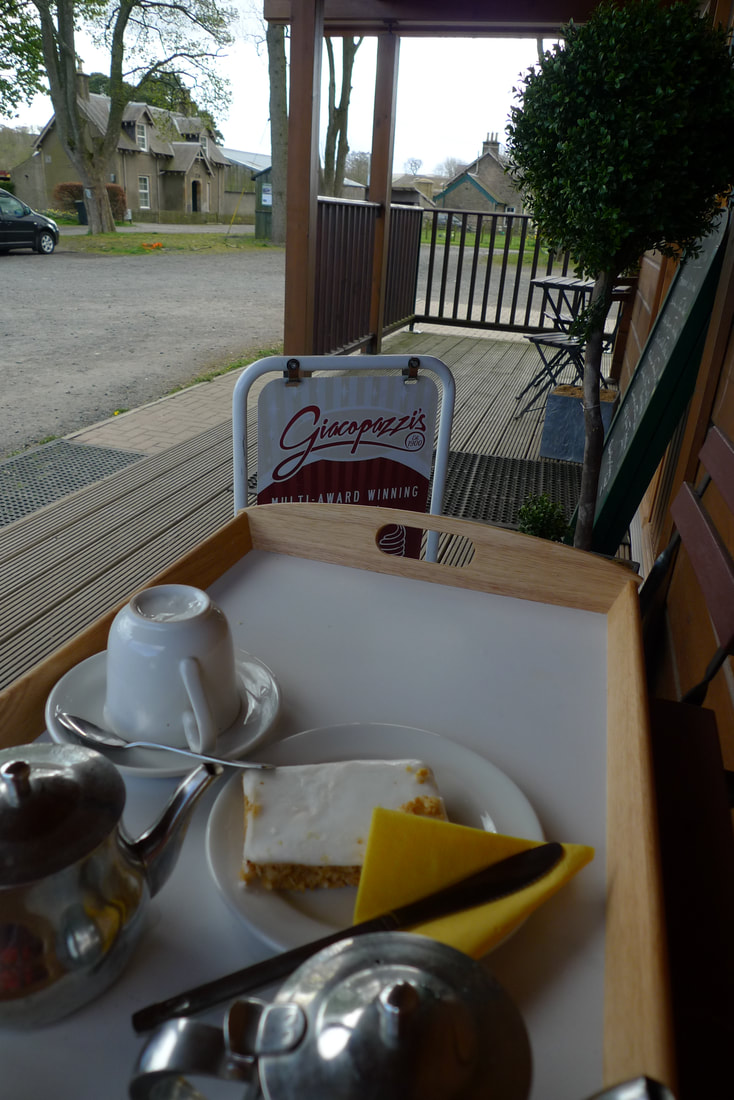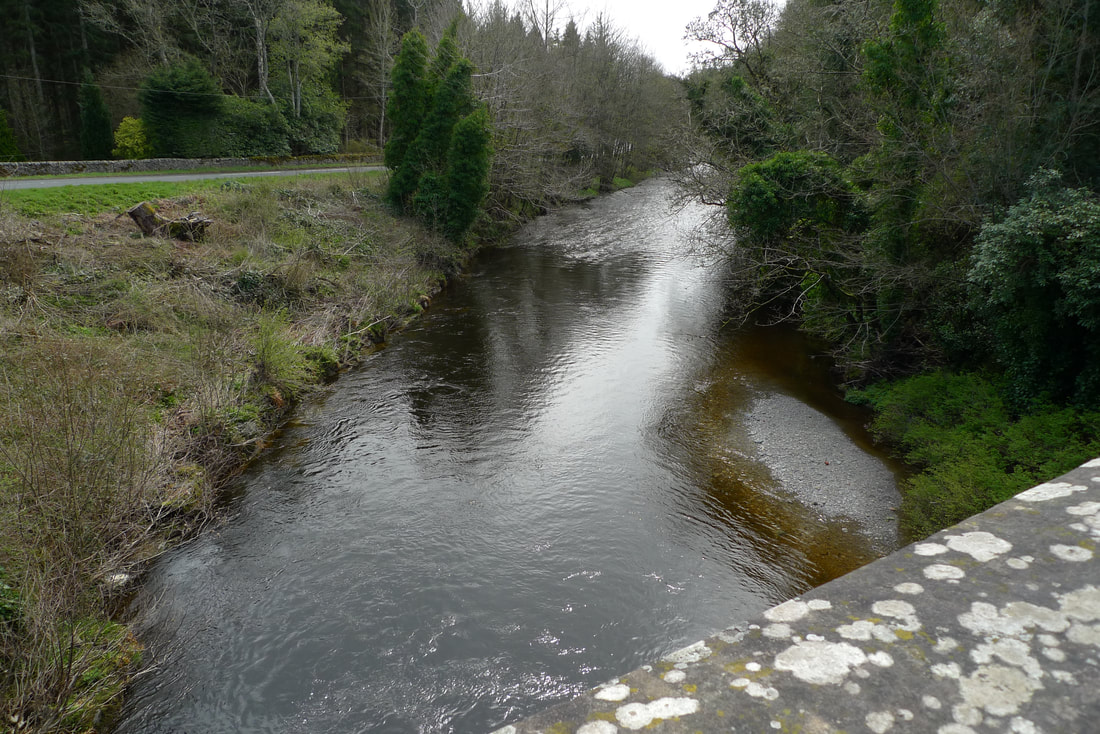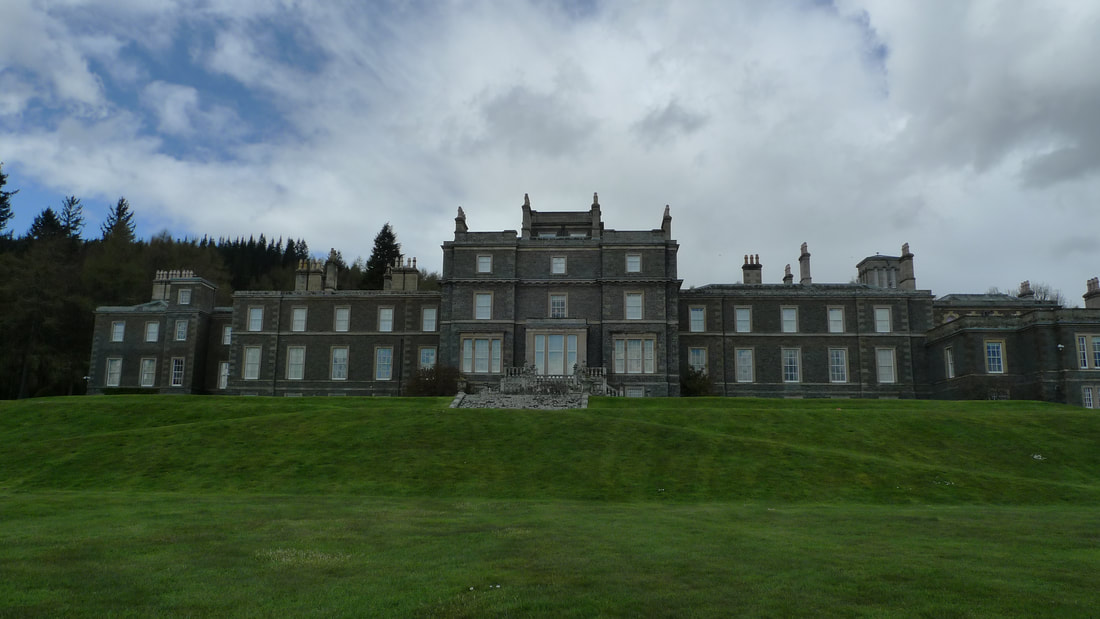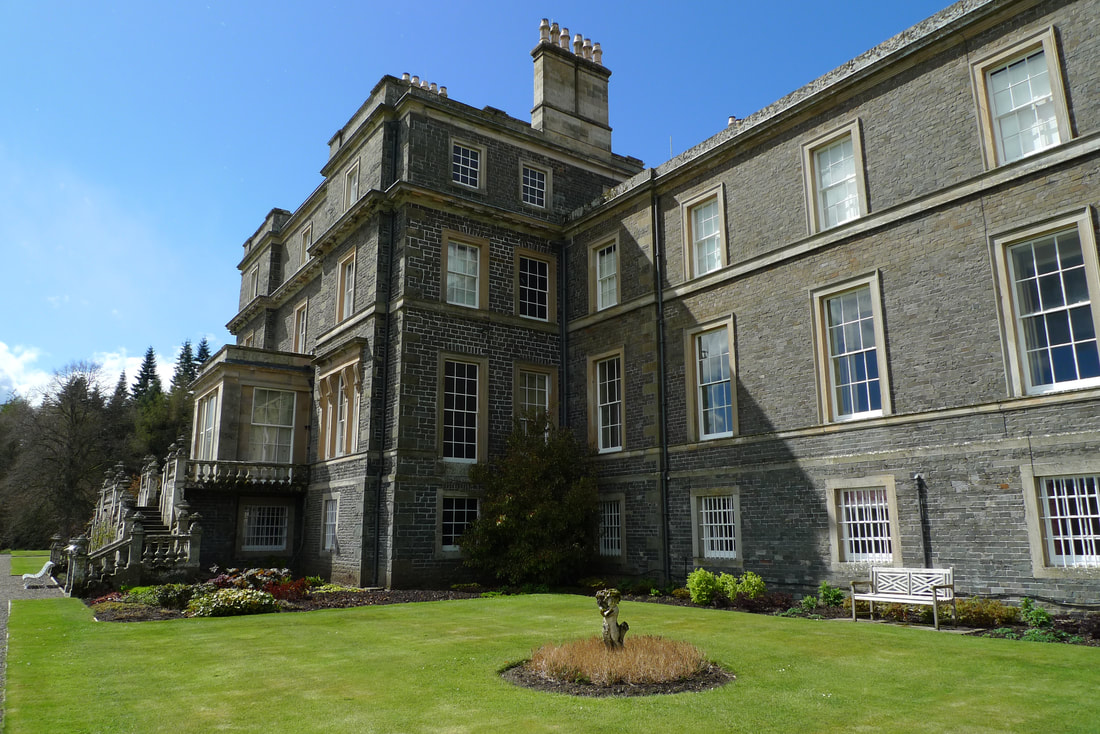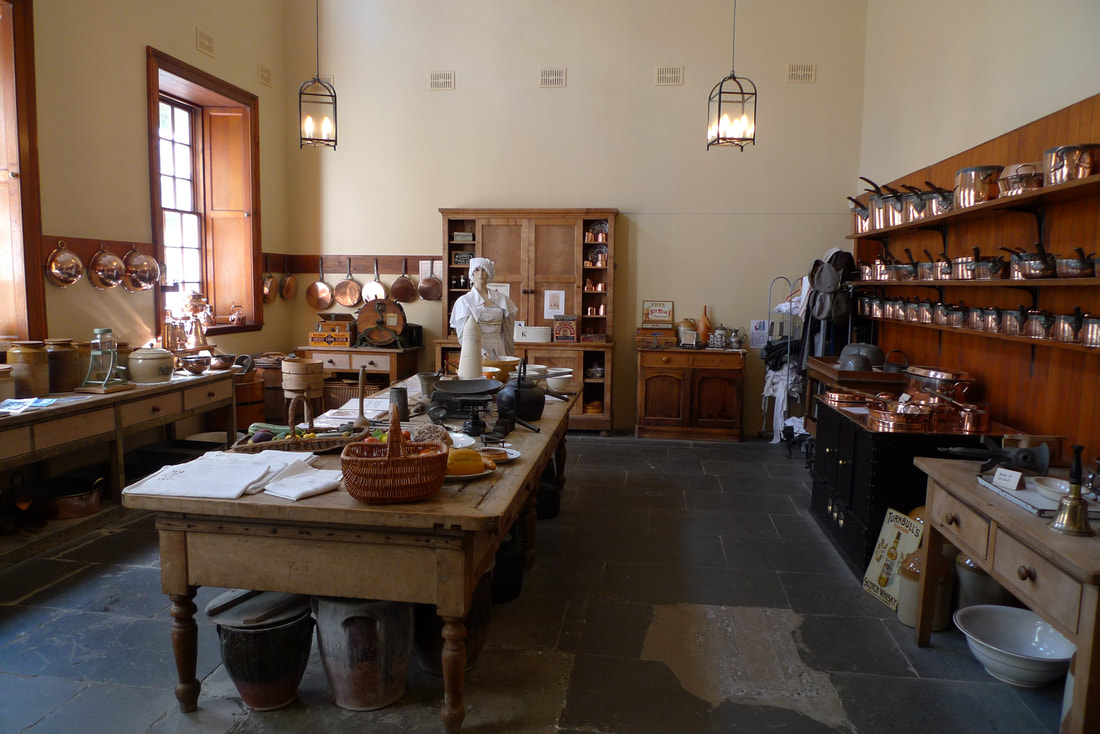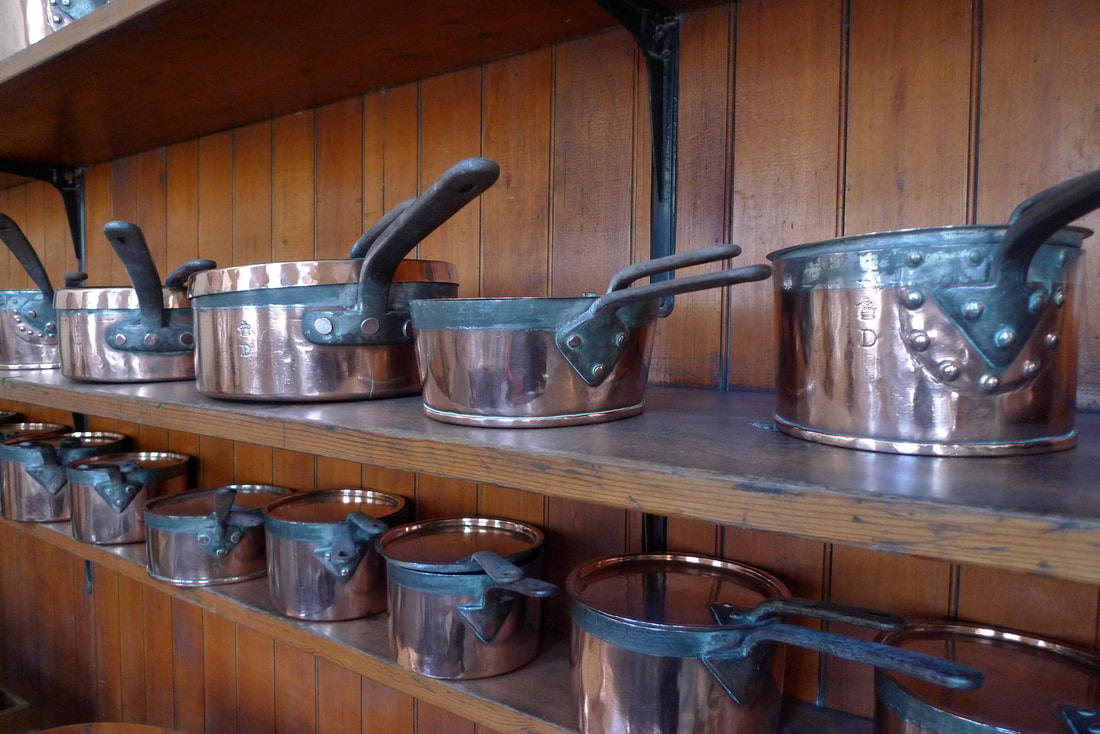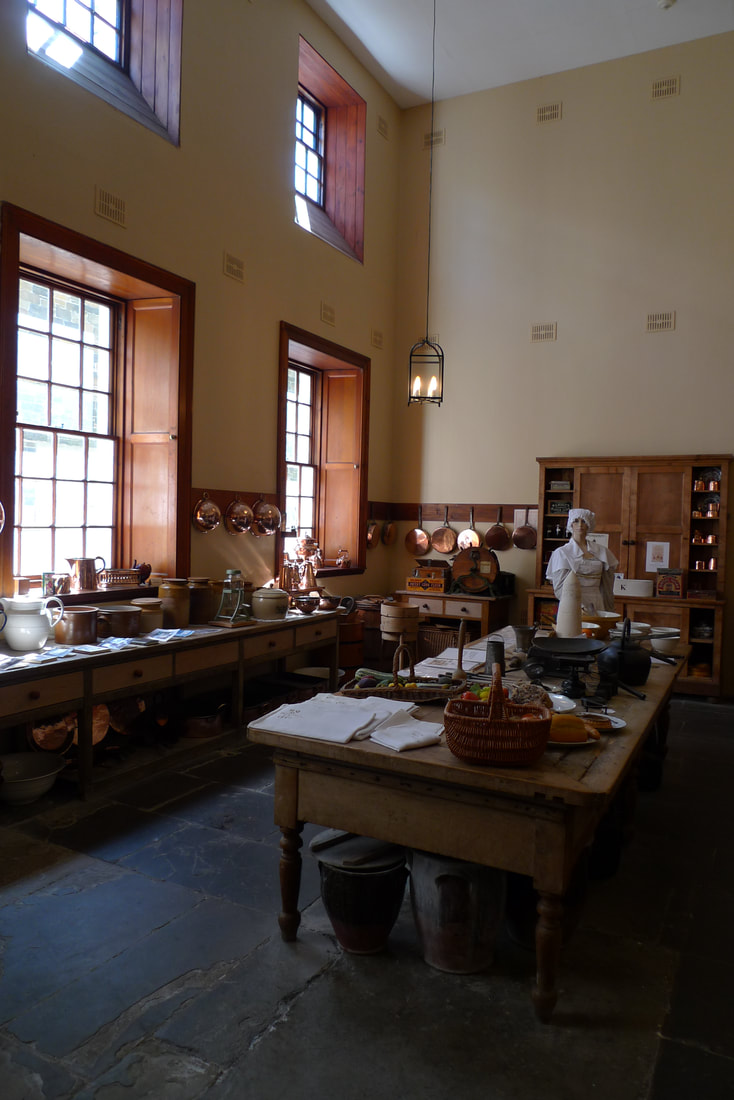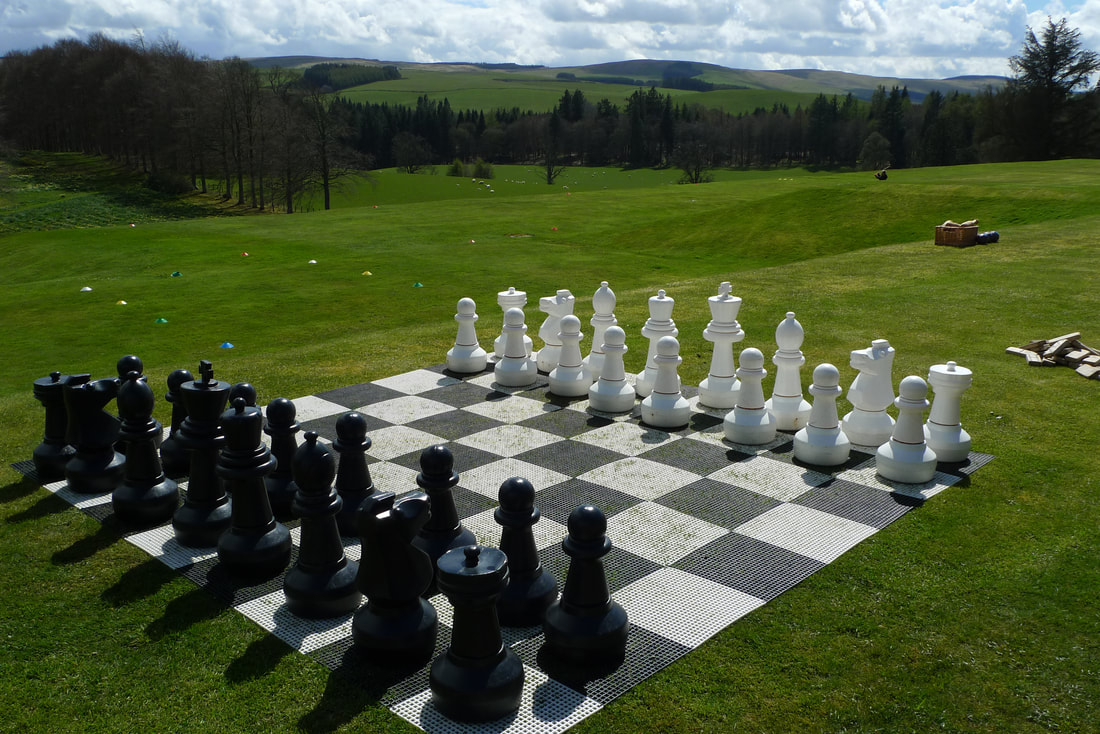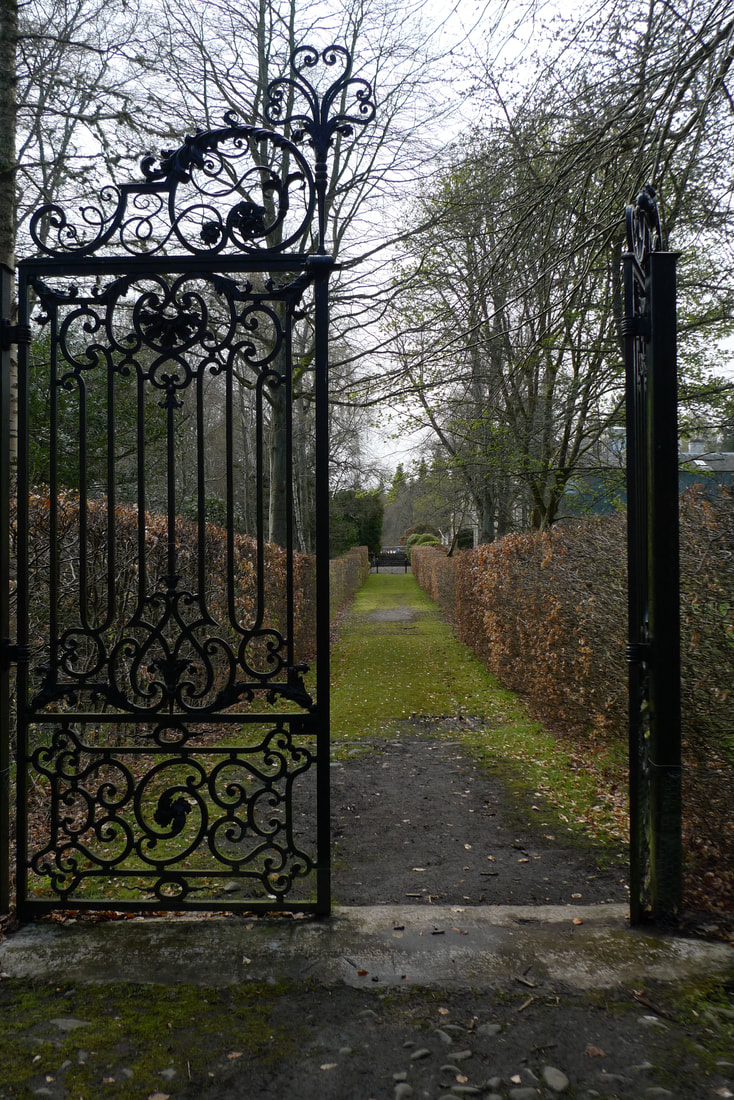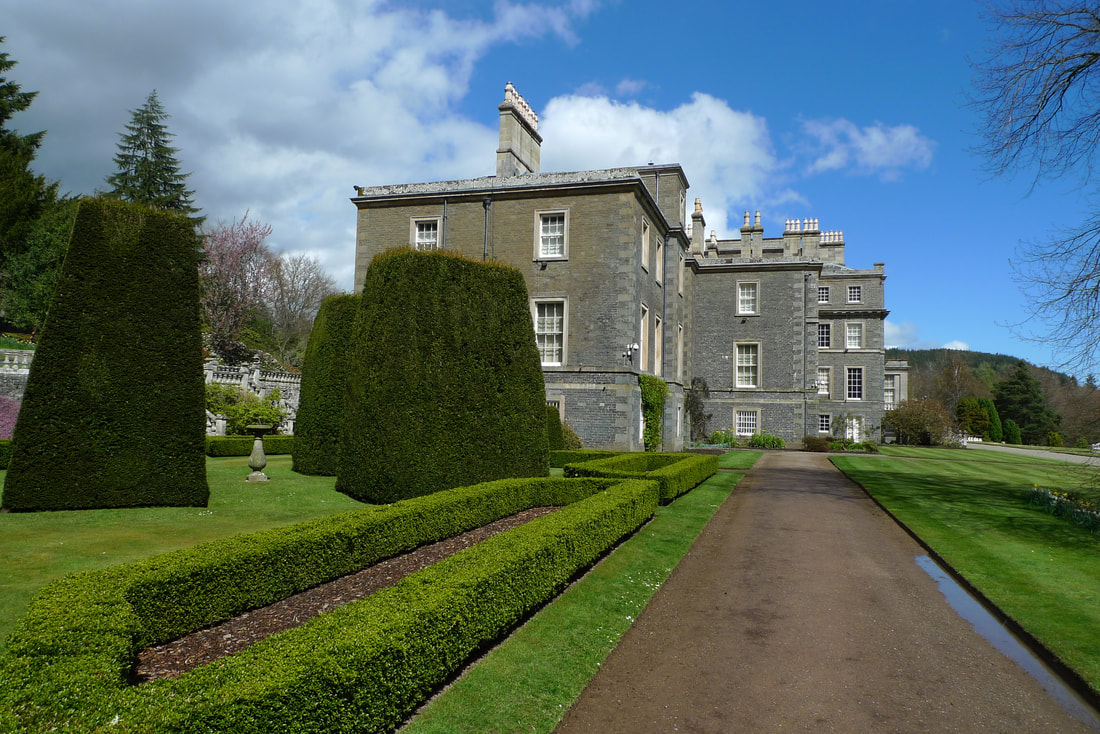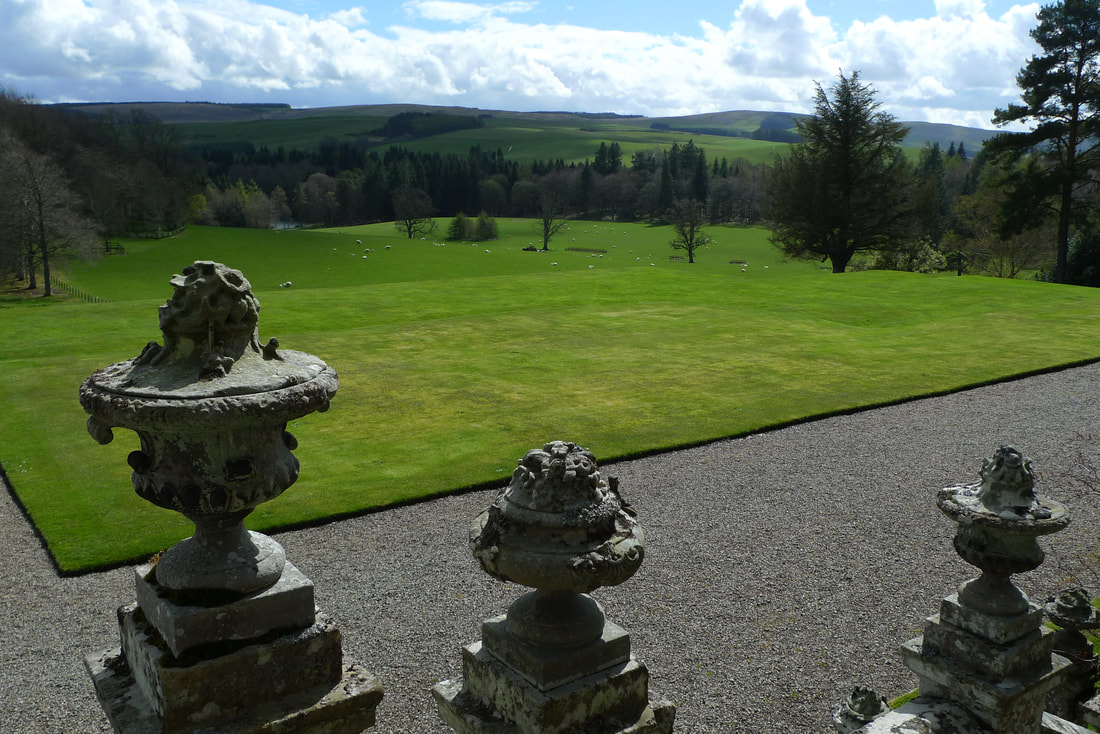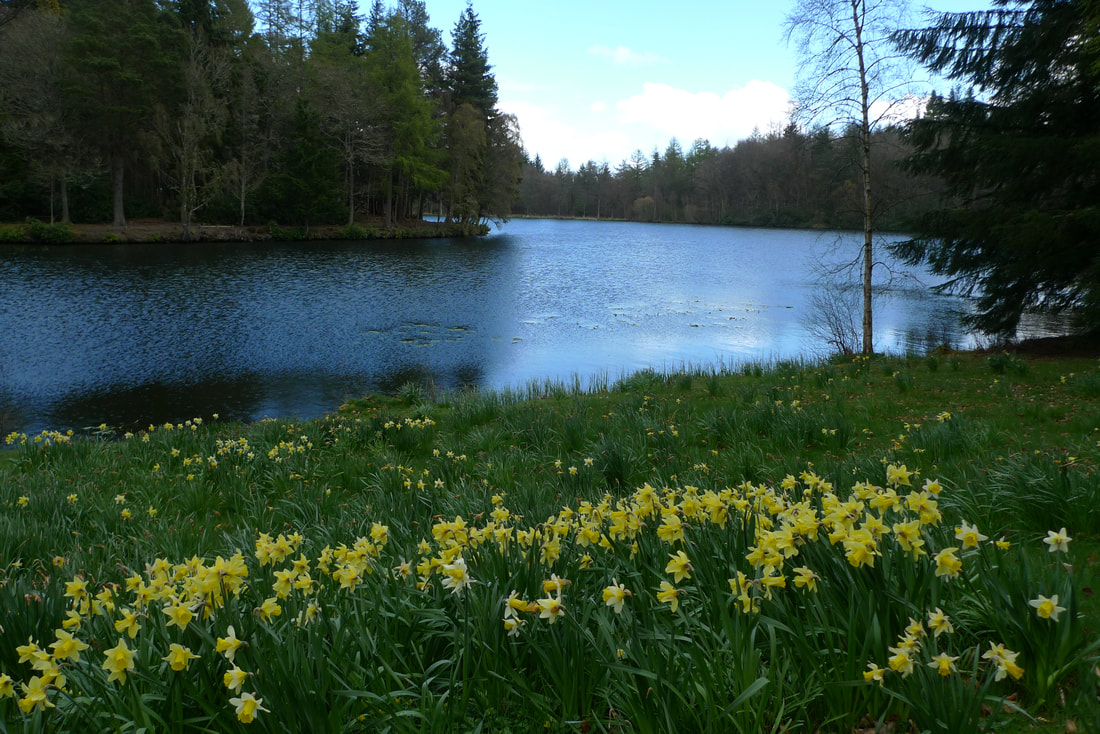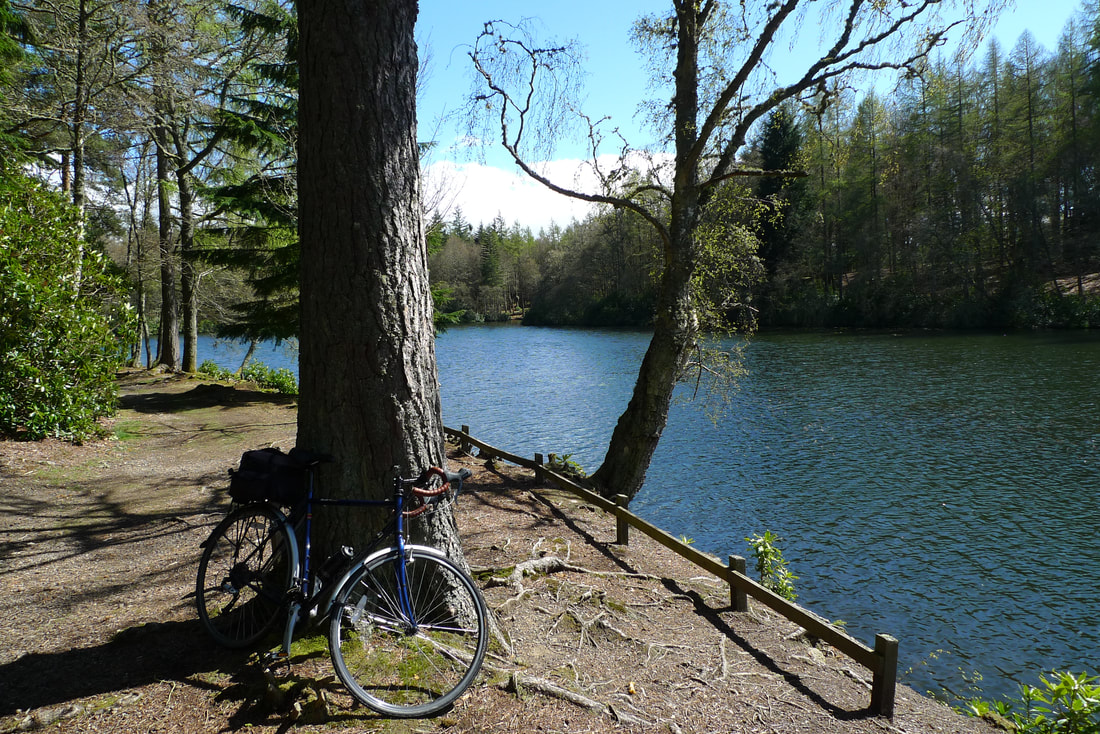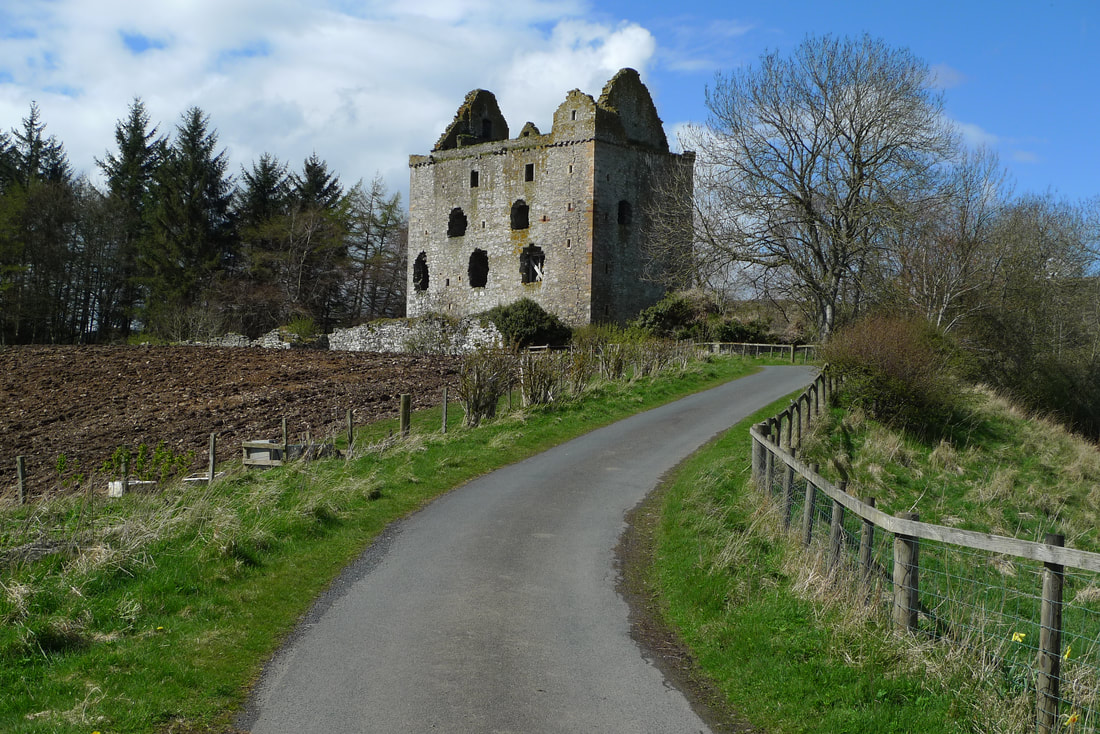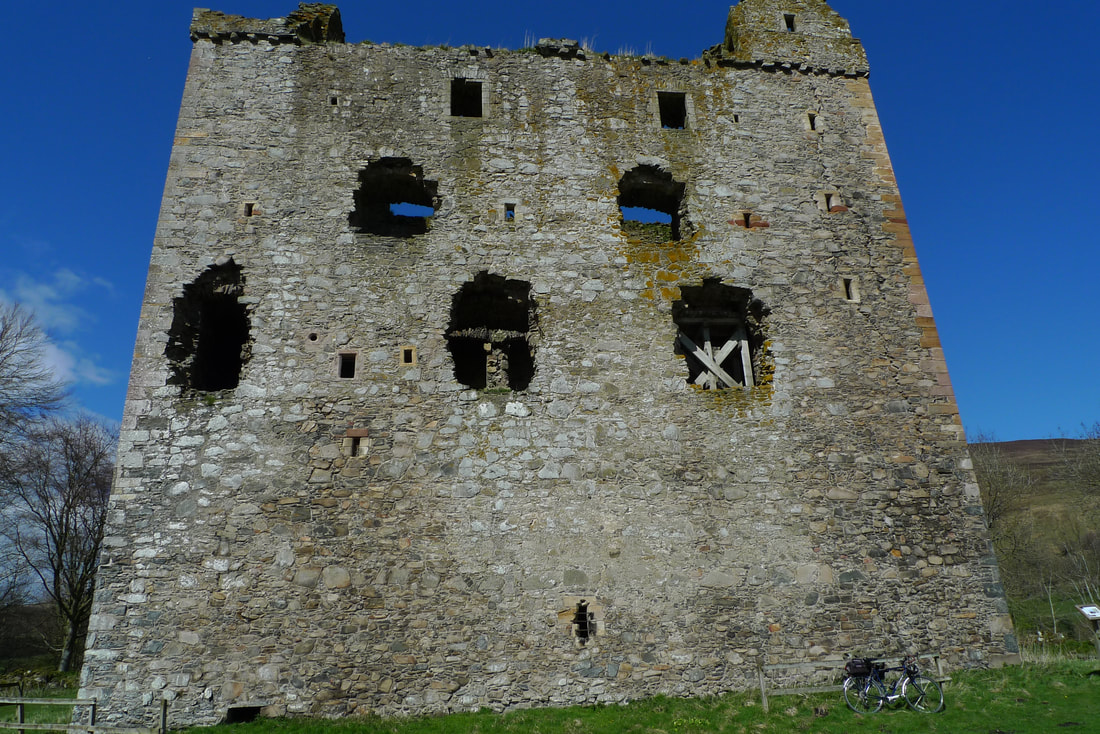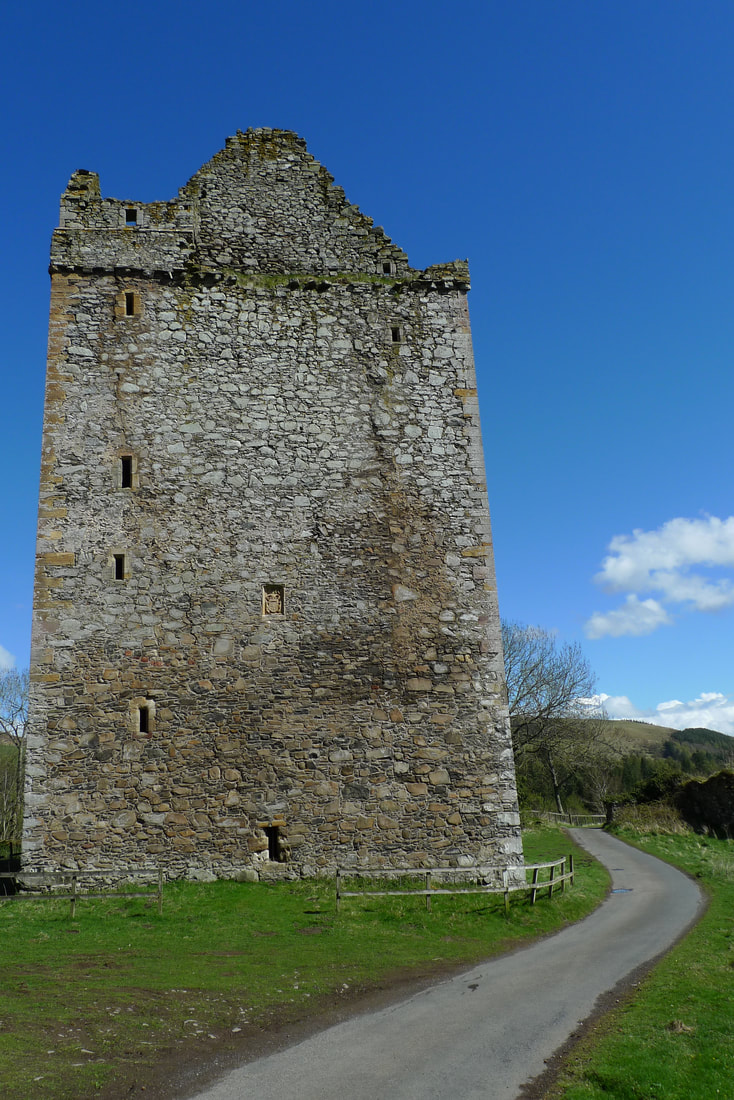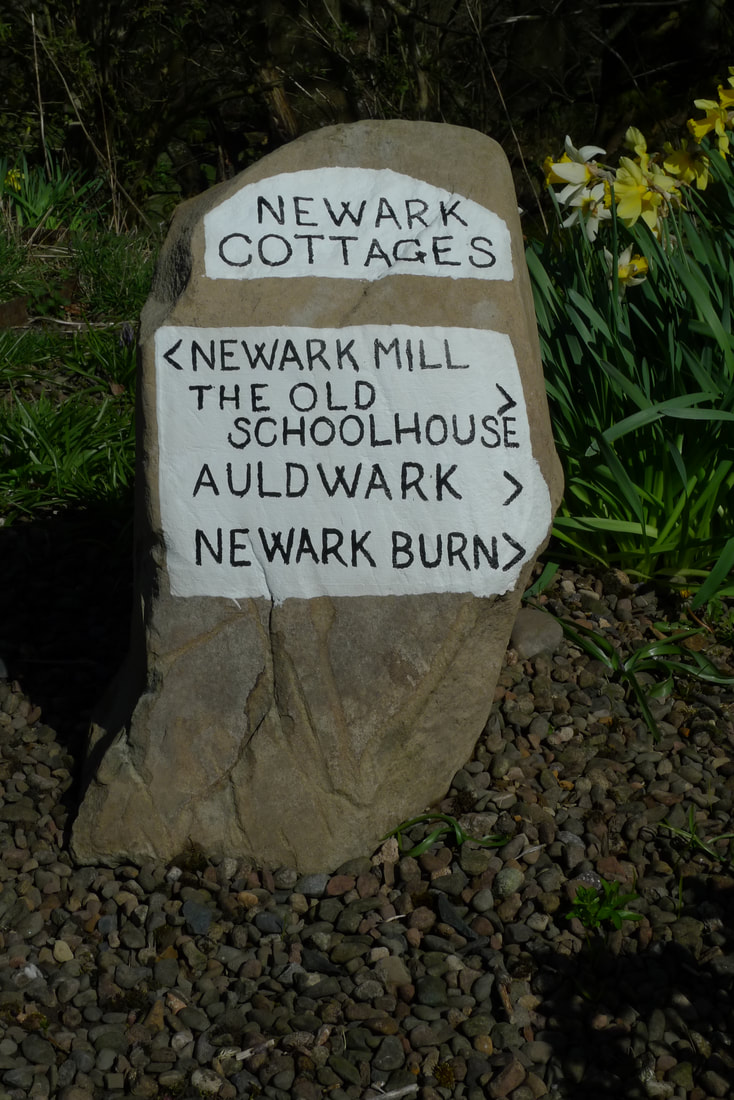|
For doughnut lovers it is hard to beat Krispy Kreme, so why not take a bicycle trip to doughnut heaven? The Edinburgh stores are located in retail parks that are predominately designed for car users, but the good news is that you can easily cycle to the Edinburgh store at Hermiston Gait.
Yes, Krispy Kreme is an American, not a Scottish product. But they taste great, regardless of where their HQ is. And, yes, doughnuts are not exactly healthy, but what is the harm in the odd treat? And if you are cycling there you are burning some calories. You might be thinking 'why is he not writing about cycling to some beautiful scenic part of Scotland instead of a doughnut shop in a retail park?', but the point is to demonstrate that it is possible to reach everyday destinations using a bicycle. If we are to truly encourage more people to switch from car to bicycle I think it is important to show that it is possible to safely reach city locations using a bike. Google Maps revealed that it would take 30 minutes by bus, but 25 minutes to cycle to Krispy Kreme. Car journey time was about 15 minutes, but this depends on traffic, which is notoriously horrendous in Edinburgh. I was very surprised because I had assumed that it would be a no-go area for bicycles because of busy roads, but it turns out that the cycle route is mostly traffic-free. Well, I never! It's all about the Union Canal The key to the success of this route is the Union Canal path, which is totally traffic-free. It takes you almost all of the way to Krispy Kreme with the exception of some short on-road sections.
The other great thing about using the Union Canal is that it is beautiful and way more scenic than the bus route or driving the main roads.
How to get onto the Union Canal My map shows two ways to get to the canal: 1. From the city centre. From the Meadows you can follow the traffic-free cycle paths through this majestic green space to Bruntsfield where the cycle path ends opposite Leamington Terrace, a low-traffic road, that leads directly downhill to the Union Canal. 2. From Morningisde. Take any of the roads that lead you onto Colinton Road. Now, you cannot get away from the fact that Colinton Road is steady with traffic, but not scarily so. If you have a bit of experience on roads you shouldn't find this too bad. You will arrive at a junction where 5 roads converge. You turn right here onto Gray's Loan, which takes you to the canal.
If you arrive onto the canal via Leamington Terrace or Fountainbridge you will notice a cute canal boat cafe called The Counter. This is a great place to enjoy canal life with a quality coffee. You can read more about it in a previous blog post.
The canal is a fascinating ribbon of greenery that can feel very remote in places, but is actually just meters from built-up urban areas.
It is the kind of place where it is normal to have a number 3 bus, heading towards the city centre, pass you on one side at the same time as a canal boat chugs by on the other side.
I stopped to watch some ducks paddling in the water. Later a magpie crouched down on the path, a short distance ahead, ready to spring up into flight. He left it to the very last few seconds before I reached him. I caught a glance of a rat scurrying into the undergrowth. London-bound express trains sped by on adjacent tracks and even cross over the canal on a bridge. I wonder if their passengers even notice the canal.
Apartments and Aqueducts
There is an interesting mix of properties alongside the canal. There are high-rise flats dating from a time when the canal was not considered such an attractive asset. And more recent apartment complexes with balconies, aimed at attracting first-time buyers to canal-side living. You very quickly move from patches of this high density housing into areas thick with trees that shield you from any sign of the city and trick you into feeling you have hit the countryside.
There is one part of the canal path where it is essential to get off the bike and walk. This is the Slateford Aqueduct, which carries the canal over the Water of Leith. It is simply too narrow and the surface too bumpy to even contemplate cycling over it. This forces people to make way for each other. This can result in pleasant exchanges, eye contact and smiles with some people as it is necessary to squeeze past anybody coming the opposite way.
It Takes Every Kind Of People
You come across all sorts of people making use of the Union Canal. In terms of cyclists it was mostly the leisure cyclist that I spotted- people wearing casual clothing, most without helmets. The canal is seen as a safe place to ride a bike. There were plenty of dog walkers, joggers and people using the canal to simply get about. At one point I came across a group of people relaxing after a kyak trip. They were having a barbecue at picnic benches and just yards away from them a group of alcoholics were quietly sipping cans of super strength lager. As I overtook pedestrians I caught snippets of conversation. This from a woman to her male companion: "Well I didn't know I was going to need to bring a clean set of underwear with me." Then a group of young lads discussing a mutual acquaintance: "Aye, but he's a good c**t" Time to come off the canal and get some doughnut It is time to leave the canal when you spot this blue sign pointing to 'Sighthill Ind. Est.'
You turn left onto Cultins Road, a dull location of car showrooms and industrial units. It is not busy with traffic, so is fine to cycle and it is downhill so fun to freewheel. It looks like at least some of the pavement on this road is marked as shared cycle and pedestrian use, so you could avoid the road.
At the bottom of the road you turn left and pass Edinburgh Park train and tram station. There are cycle lanes marked on the pavements and I advise getting onto these in preperation for the roundabout that you must cross to reach the doughnuts. Using the cycle lanes on the pavement means you can avoid negotiating the roundabout. Cycling into the car park that surrounds Krispy Kreme is tricky to say the least. It is designed to function as a 'drive-thru' for cars coming, so all of the road markings fulfill this and there isn't an easy route for cyclists or pedestrians. I ended up dismounting on the pavement and pushing the bike across. There is no shame in doing this. If it looks too dodgy to tackle a bit of road on the bike I always just get off and walk it. Guess what? Krispy Kreme have cycle racks. Amazing. I think it is brilliant that they thought to put these in. Inside the shop there is a huge window, with the words 'doughnut theater' above it, where you can observe the doughnut production line. The atmosphere is fun with pop music, smiling staff and during my visit there were lots of families sitting-in. It is the combination of fluffy dough and inspiring flavours that makes these doughnuts so special. Just read this description of their lotus white chocolate and raspberry flavour to see what I mean: 'A raspberry jam & kreme filling infused with Lotus Biscoff, dipped in white chocolate & topped with Biscoff crumb, white chocolate & raspberry pieces.'
I felt great at having successfully arrived here by bicycle. I don't think I would get the same feeling of excitement and satisfaction if I had driven or taken the bus. I had enjoyed fresh air, exercise and scenery. I felt that I deserved my doughnuts and coffee.
0 Comments
Lonely Planet have produced this utterly superb and inspiring collection of cycling routes around the world. For anybody who loves cycling, travel and dreaming of future adventures this book is essential reading. I devoured every single page and could not help my imagination racing with the possibilities of bike trips in numerous parts of our planet.
First off, the book is stunningly presented with breathtaking photography and a layout that makes you want to dive in. It is organised by continent with a travel writer describing their experiences on a particular cycling journey and then presenting a summary of similar journeys. The quality of the writing is exceptional. It is just the right length, not too long or too short, to grab your intention and spark your imagination. I found it impossible not to dream of going to these places.
Planning information extends to a map, distances, where to stay, how to get there and other essential tips. It may not be enough to seriously plot out your own route, but it points you in the right direction and this book is about inspiring you to do these rides, not to provide every single detail of the route.
About 30 countries and 200 route suggestions are contained within this book and I wanted to do all of them. There is something for everyone here. City cycling, mountain biking, family-friendly cycling, coast-to-coast cycling, cycling to breweries, cycling around lakes. You name it, all cycling tastes are covered.
Scotland is included in this book. There is one main feature on cycling the Outer Hebrides. It made me quite proud to see this alongside all of these other countries and that people will be inspired to come here as a result of seeing this book. There are also suggestions of some other cycle routes in Scotland, including Strathpuffer, a mountain bike endurance event.
I love this book and dipping into it whenever I want to dream of future adventures. You can buy it from Amazon by clicking on this image: One of the best things about cycling is doing it with a friend. My cycling buddy is Paul and we have been on numerous adventures together all across Scotland. We met at university and discovered a mutual interest in riding a bike. Soon we had bought bicycles and were meeting up at weekends and spending a few hours pedalling along the Union Canal path. This evolved into a desire to try out cycle touring with overnight trips and longer distances. Our first multi-day cycle tour took as to the Orkney Islands and we had such a great time that we wanted more and took a cycling holiday every year. Cycling together has been so rewarding because:
It can be difficult to find someone to go cycling with, particularly if you have moved to a new area. SportPartner is a site where you can find a cycling buddy. Whether you are looking for more motivation or just enjoy meeting new people while cycling then SportPartner is the place to try. Basic Membership is free. Post written in collaboration with SportPartner
Highlights of this cycle route:
Distance: Around 9 miles one-way, 18 miles return. Terrain: Mostly tarmac cycle paths, some A and B roads that have low traffic volume. Mostly flat. Getting there: Train to Tweedbank, around one hour from Edinburgh. Bicycle reservations not required. First off, take a trip on the Borders Railway
The Borders Railway is the newest railway and the longest railway to be built in the UK in 100 years. It is a superb tourism asset as it makes it much easier to access the scenery and visitor attractions of the Scottish Borders.
Read my blog: 8 Reasons to Love the Borders Railway You can also take a look at my video that shows how easy it is to use the Borders Railway for exploring the area by bike:
Journey time to Tweedbank is under one hour from Edinburgh. Once the train passes Gorebridge the view starts to become special with rivers, hills and sheep farms. There are tunnels and viaducts and the track twists and turns frequently, giving the line a unique character that makes it endearing.
Right next to Tweedbank station you will notice signage for cycle routes, so exploring this area by bike is very simple. Just follow the signs.
You want to take the path alongside the train track, heading back towards Galashiels. Follow the signs for Innerleithen.
Soon the path takes you alongside the River Tweed. I loved this ribbon of tarmac through meadows of little white wildflowers. It was a joy to ride.
This path smells sweet, fresh and woody. It is worth taking your time to spot the variety of wildflowers along the way.
There are also glimpses of Abbotsford, the home of Walter Scott, through the trees, on the other side of the river. This house, once home to one of Scotland's most famous literary figures, can be visited by bicycle, but I saved this for a future trip.
Further on, the road passes a trio of impressive timber-framed houses. They have gorgeous gardens and large bay windows looking onto the river. It looks like a scene from a country living magazine where everything is photogenic and perfect.
After about 3 miles on this road you take a left, crossing a stone bridge over the River Tweed. This will take you towards Selkirk.
The approach towards Selkirk is via a cycle path that runs alongside the busy A7. This is the least interesting part of the journey because you are just looking at a main road, but it does not last for long and it is superb that a segregated cycle path has been provided on this road.
The route does not take you into the centre of Selkirk, but passes the outskirts where there are impressive mill buildings, some ruined, some beautifully restored.
You get a great impression of how significant the textile industry had been in this town from the scale of these buildings. At one point it provided jobs for over 1000 people. It is sad to witness this visual display of the decline of an industry, but there are also positives to be found. Still in operation in this area is Lochcarron which weaves the largest range of wool tartans in the world. There is a visitor centre, shop and cafe.
From here it is only 3.5 miles to reach Bowhill House. This is by means of the A708, but don't worry because this is one of those quieter A-roads. Whose side are you on? The road passes fields where a great battle took place in 1645, the Battle of Philiphaugh. Imagine over 5000 men exchanging musket fire. You cannot tell who is on the side of the Covanters and who is on the side of the Royalists because there are no uniforms. Only a piece of paper or grass pinned to their hat symbolises which side they fight for. I wonder how many of the deaths resulted from mistaken identity? There is a battlefield walk with Interpretive panels at the fields. The Waterwheel Cafe is also located here. It is a chalet-style building, made from Scots Pine, which gives it a striking interior.
For the remainder of the A708 you will have glimpses of the Yarrow Water through the woodlands that flank the road. You cross this river on a stone bridge to enter the Bowhill estate.
'Sweet Bowhill'
In comparison with other stately homes Bowhill can appear plain on the outside. It lacks in decorative architectural features like stone carvings and columns, but I think there is an elegance to its proportions, particularly when seen across the landscaped gardens.
One frequent visitor had been Walter Scott, one of Scotland's most renowned literary figures, and he was impressed, describing the house as 'sweet Bowhill.' It is the inside of the house where the magic begins with beautiful art, furniture and antiques, so let us step inside.
Visits to the house are by guided tour. My guide's name was Walter and he loved everything about Bowhill. His catchphrase was 'unbelievable', applying this to all of the things he found incredible about the house. "This clock dates from 1640 and is still ticking. Unbelievable."
Later he remarked on the tapestries, "the colours are just the same as the day they were made. Unbelievable." There are many fascinating objects to be seen in the house. If art is your thing there are works by Canaletto, Raeburn and Gainsborough. I was intrigued by a curious long sofa with two separate seats at each end. I learned that these seats were for the chaperons to keep an eye on the courting couple who would be seated in the middle. I adored the pair of French cabinets that had birds nests painted on them. One cabinet had a nest with two eggs and the cabinet on the other side of the room had a nest with chicks inside. "But look!" exclaimed Walter, "there are three chicks, so one of those eggs must have been a double yoker." If there are children on the tour Walter pretends to do a magic trick asking the kids to look at the cabinet with the eggs and then turns to the other cabinet and says "Ta da! And now there are chicks!" Our tour visited a room that housed a collection of miniature portraits. These are incredibly detailed for their tiny size and I was surprised to learn that hairs from squirrel tails were used to paint them. Despite all of these riches Bowhill has a lived-in feel. It is still used by the Duke and his family and I liked seeing the trappings of modern life dotted around, such as plasma televisions and modern paperbacks lying alongside the antique volumes. In one room there was a lingering scent of last night's crackling fire, a basket half-full of logs and a novel resting with a bookmark, so it really felt like people had been making used of this room. Photography is not permitted inside the house, apart from in the kitchen, so here are some shots for you to enjoy.
The most striking thing about the kitchen is its double height, essential because of the heat that would have been generated in this room.
All this display of pots, pans and jugs was making me hungry so I headed to the tearoom. The sweet potato and coconut soup hit the spot and gave me the energy to explore Bowhill's extensive grounds.
I must tell you about the giant chess set that I found at the rear of the house. It has to be the most scenic location for a game of giant chess with a backdrop of rolling hills and forest.
My favourite thing about the grounds was the Upper Loch, artificially created for the sheer pleasure of having a loch in your garden. It was dug out in 1816 and that must have been some job without the aid of mechanical diggers. The loch is surrounded by woodland, which means a delightful walk through the trees when you do a circuit of the water. During my visit, pretty clumps of daffodils were in full bloom.
I was short on time so I used the tarmac roads to cycle some of the grounds, including the route up to the ruins of the 15th century Newark Tower. I passed a pair of lambs cuddled up together and sleeping. It was the cutest thing I had seen in ages.
The tower had been a royal hunting lodge and it provides an exciting 'wow' moment as it suddenly appears after a bend in the road.
Although you cannot go inside the tower it is interesting to walk around the outside, peer up at the crumbling remains of windows and put your hands on the hefty stone construction.
Reluctantly I had to leave Bowhill to catch the train home. This had been a perfect day trip using train and bicycle. Bowhill is just the right distance from Tweedbank station to provide a decent amount of cycling and plenty of time to visit the house and the grounds.
The Bowhill website promotes cycling, not just driving and public transport, as a means to reach the house. I was really impressed by this as it is quite rare to find cycling mentioned in the 'how to get here' sections of visitor attractions. |
|

